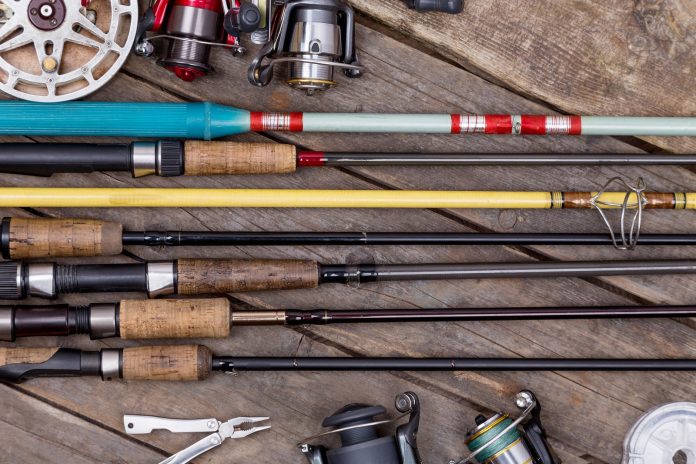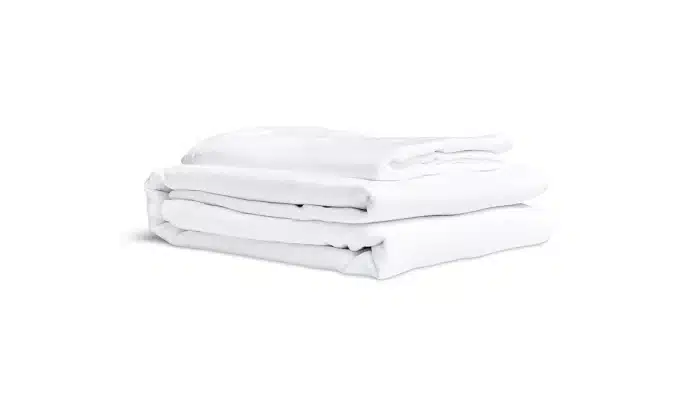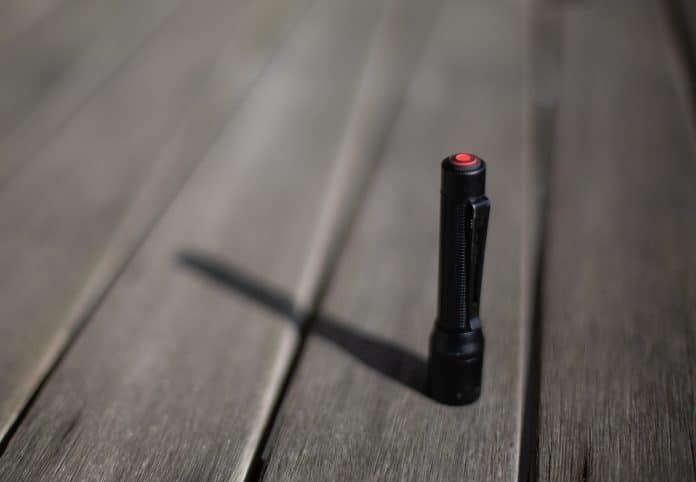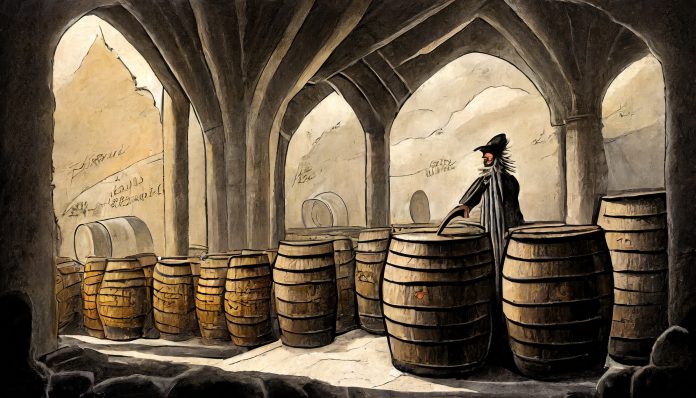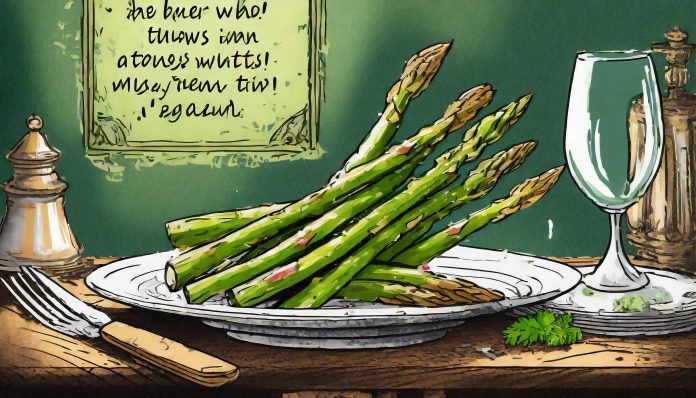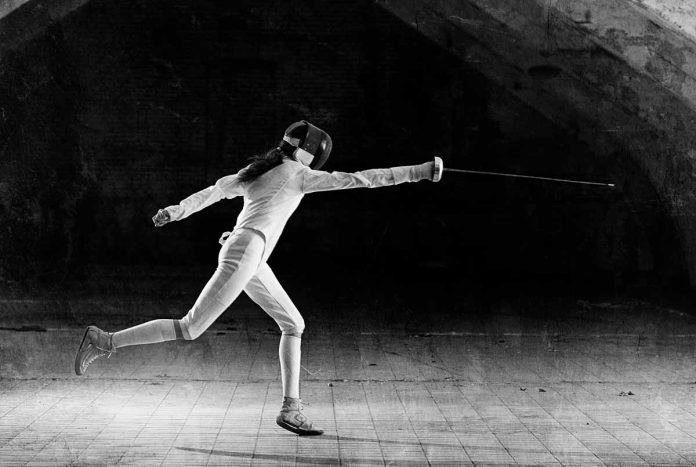This article… Is one of a few ‘help’ articles that I write as part of my role as Service Manager at Marine Deals. I am also sharing them here, because it’s often useful information to anyone involved with fishing gear. Visit In my role with Marine Deals, we receive a lot of broken and damaged…
I’m On A Boat!
I grew up around boats. As a kid, we had a batch up in the Coromandel, so many weekends were spent with my parents, on or around the family boat. But, we also sold the batch while I was still relatively young, so I never really had the opportunity to actually ‘be in charge’ of…
Were Olaf’s Fun Facts correct?

Water has memory
Now, this fun fact tickled my fancy. Hold on, ‘Water has memory?’ Well, isn’t that just the cat amongst the pigeons, Olaf? He might be more than just a “funny, enchanted snowman,” don’t you think? Let’s dive in and see how well this holds up under scrutiny.
Looking at this scientifically, and believe me when I say I’m no scientist, Olaf’s statement is, unfortunately, about as reliable as a chocolate teapot. The properties of water are well studied, with the idea that water has memory proving to be a bit of a slippery ice slide. See what I did there? The idea of water having memory is linked to a concept used in homeopathy, a form of alternative medicine. But does hardcore science back this idea up? Well, not quite.
No reputable study or piece of research has yet to suggest that water has memory. Water being ‘impressionable’ is more about changing form under different temperatures or conditions – from ice (like our friend Olaf) to liquid water to steam. But ‘remembering’? Let’s leave that to the elephants, shall we?
But let’s not be too harsh on our frosty friend. After all, he’s a fun-loving, happy-go-lucky snowman trying to understand the world, right? Can we still find some magic in Olaf’s claim? Of course! After all, the magic isn’t always in the facts, but sometimes it’s simply in the wonder of the world around us. So, while ‘water memory’ may not be scientific, it’s a fun thought!

Turtles breathe through their butts
When you thought you knew everything about animals, our affable snowman Olaf shoots out an absolute corker, right? As per his claims, ‘turtles breathe through their butts’. We’ve got to side-splittingly admit the phrase isn’t very highbrow. Oh, Olaf, you certainly snow us under with your facts. But is it rooted in reality, or has Olaf’s carrot nose grown a bit longer?
Well, dear reader, brace yourself for a titbit that will be the life of your next tea party. This fact is actually – hold onto your hats now – true! Some turtles, particularly Australia’s white-throated snapping turtles, can respire through their rear ends during hibernation, or ‘brumation’ if we’re all technical with the terminology. This rare ability is known as ‘cloacal respiration’.
But how does it work exactly?
Let’s paint a quick picture without going into a science lecture that would put even the most intellectual of nerds to sleep. In turtles, the cloaca is the ‘all-in-one’ stop for the urinary, digestive, and reproductive systems. This ‘jack of all trades’ multitasking organ lets them breathe from their bottoms when things get a bit chilly. We might not be pulling hair-splitting stunts in Arundel, but we admit that’s a pretty neat trick, don’t we?
During brumation, turtles lower their metabolism and barely breathe to save energy. Their lung breathing becomes almost non-existent, but some oxygen is absorbed through their cloaca to keep them from ultimately going under. Winter survival strategy, anyone?
So, Turtles breathe through their butts, eh? Who would’ve thought?
In summary, Olaf’s icy-ridiculous-sounding fact is grounded in scientific truth. So, the next time you’re impersonating our lovable snowman at a costume party, don’t forget to share this ‘finely-tailored’ accurate tale about turtles. Remember, no matter how hysterically delivered, each piece of wisdom has the potential of unboxing a magnificent world of knowledge!
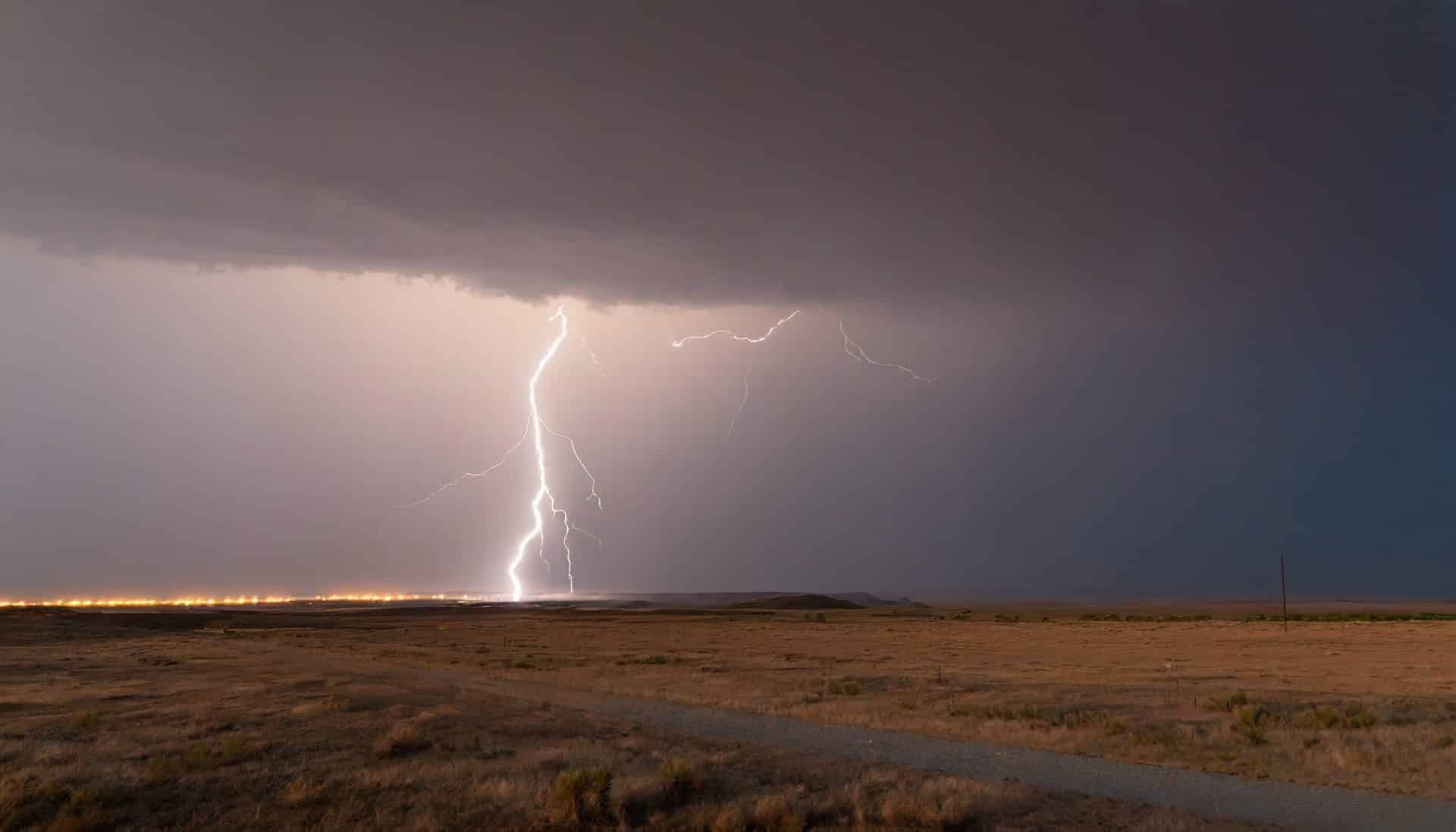
Men are six times more likely to be struck by lightning than women
Brace yourselves because Olaf dropped a shocking winter storm of a fact. With all the authority a snowman can muster, he announced that men are six times more likely to be struck by lightning than women. So, dear reader, should we dump our umbrellas and start living in constant fear of stormy weather if we chance to be of the male persuasion?
This claim’s Reality Check
Turns out, our frosty friend was packing some truth in his carrot nose. According to the National Weather Service data, men are likelier to be struck by lightning than women. But hold your horses; the figure isn’t six times as Olaf claimed.
“Between 2006-2013, 82% of people killed by lightning were male.”
These figures don’t scream ‘six times’ but suggest a stark gender disparity. But why are men more lightning-prone, you ask? The reason is relatively less about biology and more about behaviour. Men tend to engage more in outdoor activities like fishing, camping, and golfing, which makes them more susceptible to lightning strikes.
Ah! That made me think twice about that weekend golf plan. So boys, maybe it wouldn’t hurt to carry an extra large brolly, just in case?
While Olaf may have exaggerated the number, we chaps seem more prone to having electric encounters. It’s just not precisely six times more probable. Remember, regardless of gender, the smartest thing anyone can do during a storm? Stay indoors!
Move over, Olaf; the Fact Checker is here to cool down these hot facts.

People blink 4 million times a day
Now, here’s a tasty nugget from our friend Olaf that sounds quite amusing. Four million blinks a day? That’s more blinking than a disco ball at a 70s-themed dance party! But let’s crack on and do a blink-count, shall we?
Blinking Reality check
Right, let’s dive straight into this. The average person blinks about 15 to 20 times per minute. We’re awake for about 15 hours a day (let’s assume our 8 hours of beauty sleep, of course), which makes it around 900 minutes of wakefulness. A quick bit of maths here – even if we’re at the upper end of blinking… that would be:
20 (blinks per minute) x 900 (minutes awake) = 18,000 blinks a day
I’m no mathematician, but I’m sure 18,000 is much less than 4 million! So, even if you’re an Olympic gold-medal-worthy blinker, you’re not coming close to Olaf’s magical 4 million.
Sorry to burst your bubble, kids. It seems Olaf might have his blink count a bit wrong (or perhaps he was getting excited about all the blinking he’s been seeing). While 18,000 blinks a day might not sound as impressive as 4 million, it’s still a reasonable effort. I mean, can you imagine blinking 18,000 times in one day? It’s a wonder we’ve got time to do anything else!
In conclusion, if you want to reach Olaf’s magic number, you’d have to blink non-stop for… wait for it… nearly 93 days! I don’t think I need to tell you that unless you’re a particularly sleepy snowman with no other plans for the next three months, this ‘fact’ is a gloriously frosty piece of fiction!

Wombats poop in squares
Onwards to cubes and quite the stinky business, my dear reader! I have it on good authority that Olaf is quite adamant that wombats, those huge, fuzzy, adorable creatures from down under, defecate in squares. Quick question- can you imagine pooping cube-shaped cubes? Ha! I certainly cannot and wouldn’t want to either.
Olaf has gotten this essentially right, albeit with a minor tweak. Wombats don’t poop solid squares but cube-shaped poop. Curious. Even more curious is how they do it. Before you raise your eyebrows any higher, wombats are not equipped with a square-shaped backside. No, it’s their intestines that do the trick. They have an unusually long and slow digestive process, allowing their faeces to dry out and form into cubes before expulsion. Nature’s little joke, you could say.
Cubes from the Wombat Reality Check
Now, let’s return to the original point – are these cubical leavings a fact? The answer is a resounding ‘Yes’, and science backs it up. Researchers have discovered that wombats’ intestines have regions of varying elasticity, which shapes the faeces into cubes. Wombats are the only known species in the world capable of this cubic feat. So, take a bow, Olaf; you have the precision of a hawk when spotting the weirdest facts out there!
Verily indeed! Olaf touts the truth once more. Wombats do poop cubes, making many of us rethink what we learned about geometry in school. Who knew shapes were also a part of potty talk or Disney family films? The world is indeed full of wonders. So, let’s mark this claim as ‘accurate’. While it’s amusing, it’s also a proud moment for our snowman friend. And importantly, diligent Frozen Fact-checkers continue to be amused and enlightened.

Olaf’s Inspirational Quotes for Kids
Now, it’s high time we shed some light on that side of Olaf’s persona, which renders him a heartening figure, particularly for our youthful audience. A quick leaf through the dialogues from the Frozen series, and you’ll find that our comical, snow-made friend indeed has a way with words. Yes, we’re referring to none other than Olaf’s adorably inspiring quotes!
“Love is putting someone else’s needs before yours.”
Well, isn’t this a humbling one? Olaf is a keen observer and sees this truth in Anna’s love for Elsa. Selflessness teaches kids an important lesson about love in a way that’s understandable and utterly heart-melting…but not in a way that’ll harm Olaf, we hope!
“Some people are worth melting for.”
Oh, Olaf! Learning about sacrifice and self-giving love from a snowman? It’s a paradox, alright, but it’s a true nugget of wisdom. This little gem of a line teaches us that some bonds are so special we’d be willing to melt…oh, I mean, go the extra mile for them.
“I’m Olaf, and I like warm hugs!”
What says positivity and open-heartedness better than this delightful line right here? Olaf, you might be made of ice and snow, but your soul is warm! Despite his cold exterior, Olaf constantly serves as a symbol of warmth and affection. Important lesson here, kids – always be ready to welcome someone with a warm embrace!
And there we have it. Our Snowman buddy is a bundle of wisdom concealed beneath layers of frosty cuteness. So, what’s your favourite Olaf quote? Is there a quote you thought deserved a mention here? And most importantly, have you addressed someone with ‘Hi, I’m [Your Name] and I like warm hugs’ yet?
The Winkl Linen Sheet Set
Last winter, I formed an unexpected bond. Both with a person and with the Winkl Linen Sheet Set. Sounds strange, right? Falling for bed linen? I thought so, too until I experienced these sheets myself. If you’re not gushing about your sheets as I am, perhaps it’s time for a change. These Winkl gems swept me off my feet one chilly winter night.
If you’re considering upgrading your bed sheets or simply yearning for luxury in your bedroom, you’re in the right place. I’m here to share my review of a linen set that’s been my faithful companion over the recent cold months. Who would’ve thought a single superior sheet set could usher in such comfortable sleep?
Unveiling the Quality: A Close Look at The Winkl Linen Sheet Set
Imagine this, mates – lounging in bed with the Winkl linen sheets caressing your skin. These aren’t just any sheets – they’re made with top-tier, pure Linen with a cosy 180 thread count. Due to Linen’s naturally thick fibres, the thread count is a bit lower than some may expect. However, don’t be mistaken — these sheets are remarkably durable and long-lasting.
Now, let’s talk materials. The Flax used in these sheets is sourced from Belgium and France—arguably the elite producers of quality flax. This Flax is what makes Winkl sheets breathable and refreshingly cool. You’re probably thinking – why source from Belgium and France? These regions provide ideal conditions for flax growth, resulting in top-class Linen.
Winkl linen sheets are produced via an eco-friendly process. After being made, the sheets are treated with a stone-washing process. Why, you might ask? This technique increases the softness of these plush sheets and shrinks them a tad, ensuring they fit your bed perfectly from the get-go. It’s attention to such details that genuinely sets Winkl linen sheets apart.
Sorry, did you say Flax?
That’s right, we’re talking about Flax here. Not just any flax, mind you, but the kind that’s been magically transformed into Linen. Flax linen is a natural textile known for its lightness and breathability – characteristics you can’t ignore when snuggling up in bed. The flax fibres, derived from the stalks of the Linum usitatissimum plant, a rather long-winded name for the common flax plant, are traditionally crafted into linen material. The result is a durable, absorbent fabric that’s oh-so-gently against the skin.
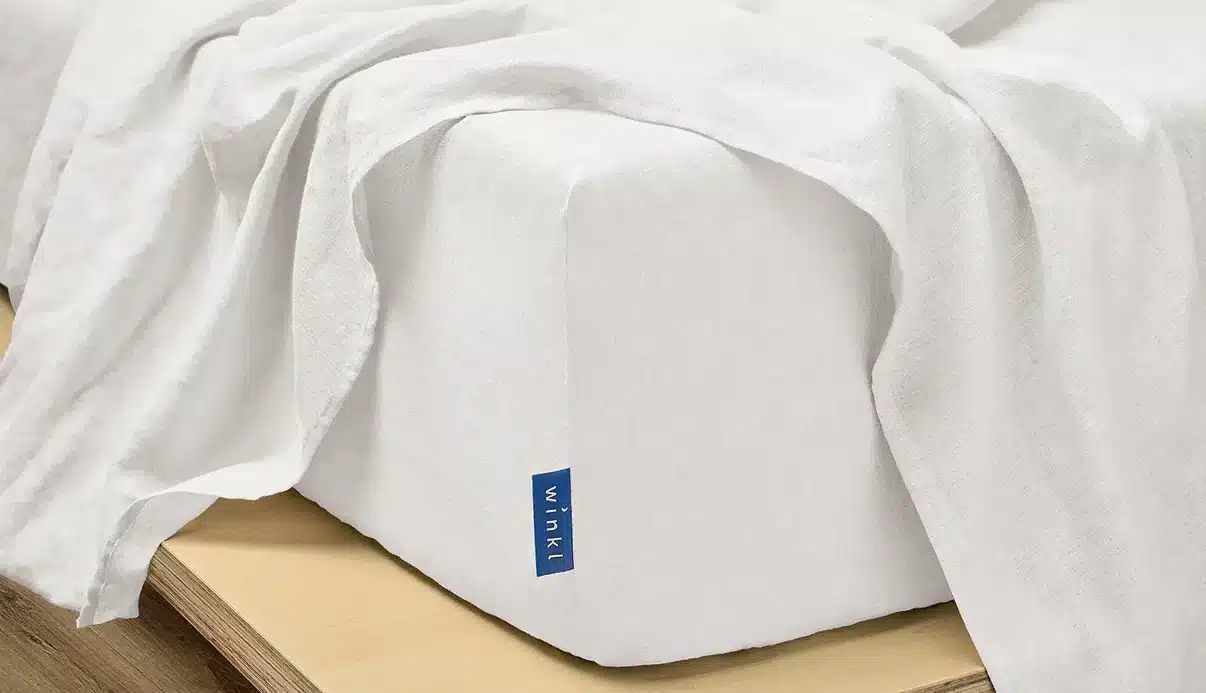
Luxurious Comfort: The Feel of The Winkl Linen Sheet Set
Initially, it’s fair to say the sheets felt a little scratchy. However, after a couple of washes, that feeling completely disappeared and was replaced with a soft texture I had never felt on a sheet. I could only compare it to a 20-year-old mohair blanket I still have. Soft, warm, comforting, but not clammy or scratchy.
No More Sweating: How The Winkl Linen Sheet Set Regulates Temperature
When I purchased the Winkl linen sheet set, my concern leaned heavily on the temperature regulation aspect. Considering winter was approaching, I did not want to buy sheets that would freeze me at night. Quite comically, I was also concerned about turning my bed into a weeping snowman in case the sheets became too hot. I tend to sleep hot generally.
But, ladies and gents – I have never slept better. The sheets trap the right amount of heat to keep me comfortable without turning me into an overheated bun.
Magic? Nope, pure science. The Winkl Linen Sheet Set can adjust to your body temperature. In the winter, it insulates, keeping you warm and comfy. The solid yet breathable linen fibres prevent sweating by allowing adequate air circulation. Now, isn’t that marvellous?
Beyond Winter: Using The Winkl Linen Sheet Set All Year Round
If I asked you to think of Linen, your mind might immediately flicker to images of scorching summer days, not the winter. It’s true – Linen is well-considered a heavyweight champion for summertime because of its breathability. But don’t pigeonhole it to just one season — my experience with the Winkl Linen Sheet Set this winter has made me realise its potential for year-round use.
You see, these beauties from Winkl aren’t just your run-of-the-mill sheets. They’re a delightful paradox, being both warm and cool at the very same time. That’s right, I said warm and cool. Allow me to explain.
Warm and Toasty during the Chillier Months
Traditional wisdom would have us reach for flannel or fleece sheets in winter — they’re cosy, right? But then you wake up at 2 a.m. thoroughly overheated. This is where Winkl’s linen sheets genuinely shine. Linen, derived from the wholesome flax plant, has excellent heat preservation capabilities. I found the sheets to keep me comfortably warm in the winter without causing me to wake up in a sweaty inferno.
A Cool Breeze During the Summer
As they say, the proof of the pudding is in the summer heat. Or something like that. This is where Linen’s famed breathability comes into play. The Winkl Linen sheet set, with its slightly rougher texture compared to its smoother cotton cousin, allows for excellent airflow. The result is a divine, relaxed, non-clammy feel during those long summer nights. While I haven’t hit the peak of summer yet, I have high expectations based on the performance in the other seasons thus far.
The Magic Transition – Spring and Autumn
Spring and autumn, transition seasons, can be notably tricky for bedding. The Winkl linen sheets have proven to be adaptable chameleons, adjusting to these in-between temperatures. Coming out of winter, I found the Linen pleasantly warmer as the nights started to heat up. Similarly, moving from the searing heat of summer into autumn, the sheets remained comfortable and relaxed. The Linen’s adaptability impressed me here.
So there you have it – an all-season solution from our friends at Winkl. Don’t let Linen’s reputation as a summer stalwart put you off – these Winkl linen sheets, indeed, are year-round gems.
Conclusion: Wrapping Up My Experience with The Winkl Linen Sheet Set
I know this all sounds very gushy. But, these sheets, in combination with the Winkl Mattress they live on, really have upped the experience and quality of sleep I get. Being an older gentleman now, I treat my recovery (i.e. sleep time) very seriously – if I don’t get good sleep, I feel it, physically and mentally – so I have gotten rather precious about bedtime.
Now, I wouldn’t typically bandy about phrases like “game-changer” or “revolutionary,” but honestly – with the Winkl Linen Sheet Set, there isn’t a more fitting description. These sheets are like the Rolls-Royce of bedding—they glide smoothly, exude sophistication, and are all about comfort. They are that good.
A few Highlights of My Experience
- Warm in winters, cool in summers: These magical sheets appear to have a mind, knowing exactly when to warm you up and when to bring on the cool factor. All year-round comfort? Yes, please! Who said you can’t have your cake and eat it too? I do have a set of high-quality cotton sheets as well. So it will be interesting to see who wins out at the end of summer.
- Luxury at its finest: I feel like royalty whenever I wrap myself in these Winkl Linen Sheets. And let me tell you, this experience is not something you get with regular cotton sheets. It’s very different. Cotton can be cool and crisp, but Linen is just welcoming.
- Durability that impresses: The sheets have maintained their integrity and softness even after several washes. There aren’t any signs of wear and tear.
So, would I recommend the Winkl Linen Sheet Set? Now, that’s a rhetorical question if there ever was one! But seriously, if you want to amp up the luxury factor in your life, look no further. Slide in, snuggle up and let Winkl do the rest.
Your sleep is essential, and so is choosing the right bedding. Invest in a product that looks good and stands the test of time (and seasons). And remember, you’re not just buying sheets – you’re investing in a piece of well-being.
First thoughts on the Led Lenser P3 Core Torch
Why a Small Torch is a Must-Have Everyday Carry
In this era of technology, where our smartphones boast a tool for seemingly every occasion – a Swiss army knife of the digital age, it might seem a bit archaic to suggest carrying a stand-alone torch. Besides your phone, you’ve also got your wallet, keys, and infinite recycled shopping bags to contend with. So, why should you add a small torch to your everyday carry (EDC)? Allow me to enlighten you, pun entirely intended.
Firstly, while our phones are unquestionably handy, their batteries are not infinite. Consider a power outage, an unplanned night walk or any situation where prolonged use of light is needed. Do you want to sap your phone’s battery to illuminate your way?
Moreover, a properly designed torch, like the P3 Core Torch, offers a significantly brighter and more focused beam than most phones, so you can light up that dark alleyway or peer into a deep, dark crevice without straining your eyes or risking a nasty surprise.
Then there’s the issue of durability. Your phone wasn’t built for rough-and-tumble conditions. Drop it in a muddy puddle, knock it against a hard surface, or give it to an enthusiastic toddler for an impromptu game of ‘throw and fetch’, and your light source might end up out of commission. Conversely, the P3 Core torch is shock and water-resistant, poised to weather the storm quite literally – rain, shine.
So, to sum it up, a small torch, like the P3 Core Torch, provides an independent, bright, durable, and possibly life-saving light source. If that’s not a valid reason to include it in your EDC, I’m not sure what is. Just don’t shine it in your eyes.
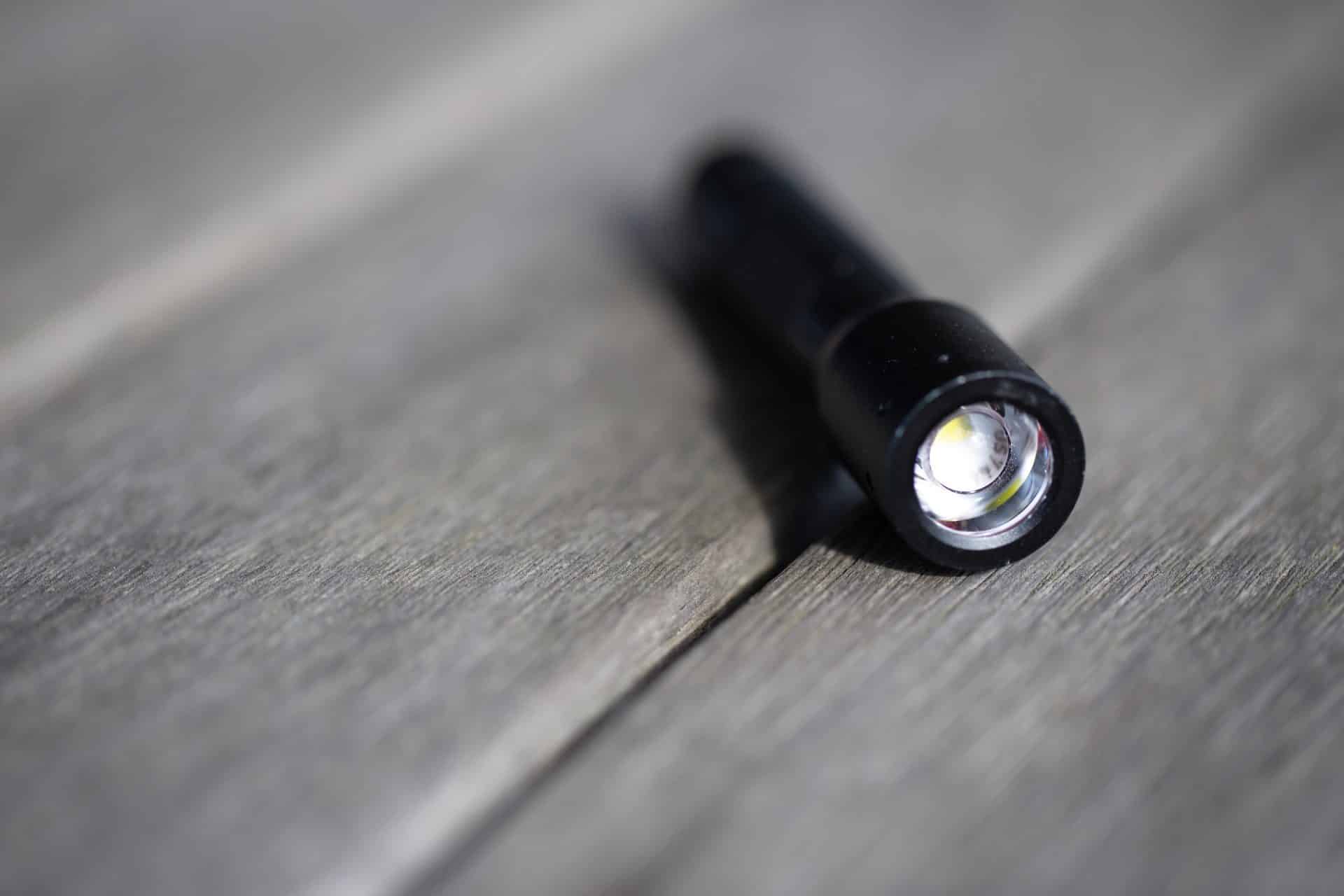
Unboxing the P3 Core Torch: First Impressions
The P3 Core Torch makes a fantastic first impression inside the sleek packaging, hinting at its robust and compact form factor. Right off the bat, you’re presented with a small, lightweight torch that boasts exceptional brightness – 90lumens output – significantly impressive for a tool of its size. Running on a single AAA battery, it runs for 6 hours on low power and is compact and light (42g).
With a simple click interface (button on the back of the unit) – you click through the three power levels and off again – I much prefer this to any twisty type setup. To change from the broad to spot beam – you pull the front lens out forward – an operation most LED Lenser owners will already be familiar with.
It fits perfectly in the pocket and doesn’t catch the hand if getting the keys etc out.
Overall – very impressed!
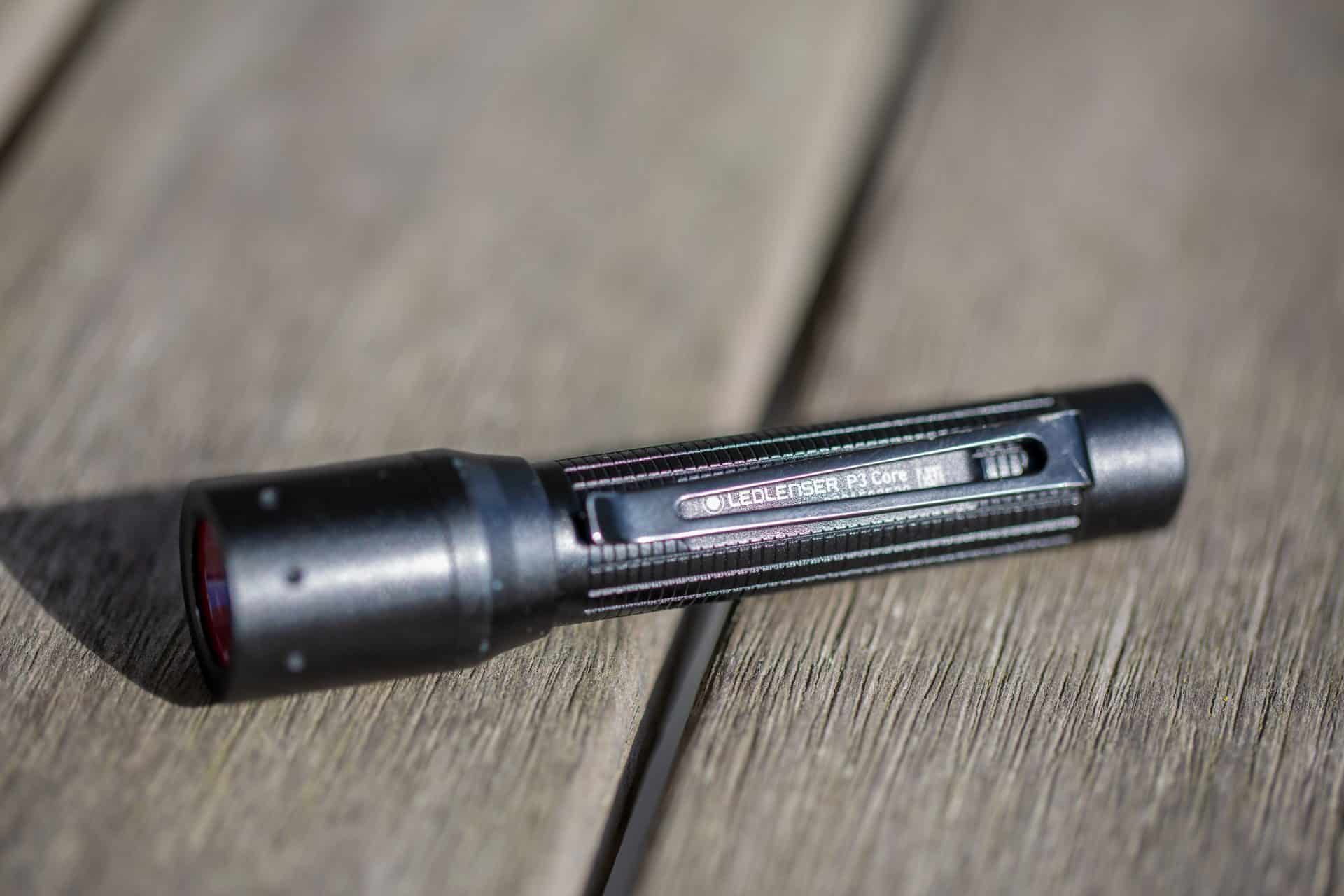
Illuminate Your Path with the P3 Core Torch
The P3 Core Torch impressed me with its stellar performance and durable construction. Remarkably lightweight yet solidly built, this torch disproves the old saying, ‘Small but mighty doesn’t apply to torches’—because it unquestionably does here. While carrying a separate torch might have sounded absurd in the smartphone era, the P3 Core Torch reminded me of a dedicated device’s irreplaceable utility.
What is Guy Fawkes?
Dad. What is Guy Fawkes?
Well, more correctly – who was Guy Fawkes? Mainly famous for his failed attempt to blow up parliament in London, Guy Fawkes was a former soldier turned activist born in Yorkshire, England, in the 1570s. He’s remembered each year on November 5, the night his plan to blow up the Houses of Parliament and the ruling King James I was foiled back in 1605.
Why do this? You may ask. Fawkes and his group of co-conspirators were Catholics, and they were frustrated with King James I’s Protestant rule, which was not in favour of Catholics—their basic plan was to replace the Protestant King with a Catholic ruler.
How was the plot foiled?
Because of an anonymous tip-off, authorities found Fawkes in a cellar under the Parliament building with 36 barrels of gunpowder. He was arrested and later executed.
Today, Fawkes’s failed plot serves as an annual reminder (in theory) about the importance of unity and peace in the face of divisive religious and political beliefs. However, if we are honest with ourselves, it’s long been replaced by a focus on the fireworks themselves, with most people being unaware (or uncaring) about the origin.
But speaking of fireworks, do you ever wonder how they work? Let’s take a look.

How do fireworks work? How do they get the different colours?
Well, I’m glad you asked! So, the first thing we need to know is that fireworks are not just about bright lights and deafening sounds. There’s a lot of science behind them. Essentially, when you light a firework, you’re setting off a chain reaction of chemical events. Now, let’s dive a bit deeper, and don’t worry! We’ll keep this fun and simple so you can sound like a mini scientist!
The Chemical Reaction Behind The Magic
You see, fireworks are made of different components; the primary ones are a fuel, an oxidiser, and a chemical mix that produces bright colours when burnt. Now, for a firework to explode and light up the sky, it must first be packed in a tight container. When you light it up, the fuel reacts with the oxidiser, releasing gases rapidly. This rapid release of gases is why fireworks explode and create that ‘boom’ sound you love so much.
Birth of the Dazzling Colours
But what about the intriguing colours? Well, those mesmerising reds, yellows, greens, and blues? Yes, they all come from different chemical compounds. When these chemicals get heated, they produce specific colours. It’s like each chemical is dressed up in its favourite colour outfit!
- Strontium and lithium compounds create a deep red.
- Calcium salts help produce a luscious orange.
- Sodium compounds give off a bright yellow (just like table salt).
- Barium compounds light up in a beautiful green.
- Copper compounds create that captivating blue you adore so much.
Each chemical compound starts a tiny, colourful fire in the sky. The most exciting thing is mixing these chemical compounds to create a broader range of colours. But by combining compounds, you can make the vast array of colours, shapes and explosions you see in the sky.

Firework Safety: Tips for a Spectacular and Safe Celebration
For all the sparkle and splendour they bring, fireworks can pose certain risks if not handled correctly. So, how do we go about ensuring our celebrations remain both fun-filled and safe?
The ABC of Firework Safety
Secondly, there are general safety measures we can all follow to create a safe atmosphere. Let’s call these the ABC’s of Firework Safety:
- Adult supervision: Never let children handle fireworks unsupervised. Even sparklers, which might seem harmless, can reach temperatures high enough to cause severe burns.
- Be sober: Avoid consuming alcohol or drugs when dealing with fireworks, as they can impair your judgment and reaction time.
- Clear area: Fireworks should always be lit in a wide-open space, away from buildings, vehicles, and flammable substances.
What to Do In Case of an Accident
Despite all precautions, accidents can still occur. Knowing what to do in such a situation can help limit harm and speed up recovery. If someone gets hurt during your fireworks display, envelop the burnt area with cool, but not cold, water. It would be best to convey the individual to the nearest medical facility quickly. It’s always helpful to have an emergency kit and include a way of summoning ambulance services. Keep a hose, or at a minimum, a bucket of water handy!
Remember, it isn’t an infringement on your fun to be attentive to safety. Consider it as laying the groundwork for a truly joyous occasion that’s completely worry-free!

Look after your pets!
Now, we’ve just talked about us humans enjoying the Guy Fawkes fun, but what about the other significant part of our household? Yes, I’m talking about our furry friends. They, too, are affected, but unlike us, they’re less keen on all the noise and bright flashes.
Spare a Thought for Your Pets
You see, our pets have far more sensitive hearing than we do – you can think of it a bit like a superpower. Now, imagine how a tenfold increase in noise might feel to you. Not quite as enjoyable, right? That’s what fireworks can sound like to them. So, we must take extra care to ensure our pets feel safe and secure during the Guy Fawkes festivities.
So, how can we help them?
- Keep Them Inside: Even if your dog usually lives outside, make an exception for this night. Trust me, they’ll thank you for it!
- Create a Safe Space: Try to provide an enclosed, dark space where your pet can hide if they feel scared. Maybe it’s their favourite spot under the bed or a cosy nook in the cupboard.
- Distraction: A bit of distraction doesn’t go amiss. Perhaps their favourite toy or a special treat will keep their mind off those scary sounds.
- Stay Calm: Pets often take cues from their human pals. So, do your best to stay calm and routine to help your furry friend feel secure.
Remember, Guy Fawkes Night should be a night of fun for everyone, and that includes the four-legged members of our family, too.

Different Traditions and Celebrations that Utilise Fireworks
Thinking about Guy Fawkes Night, I’m sure you’ve noticed that fireworks aren’t an exclusively British tradition or something we do only on the 5th of November. So why do we find fireworks lighting up the night sky at different events worldwide? Let’s go on a journey and explore a few global traditions that incorporate these beautiful and dynamic spectacles.
New Year’s Eve Celebrations
Now, remember staying up on New Year’s Eve waiting for the clock to hit midnight? What’s the first thing we see and hear when we welcome the New Year? That’s right, fireworks! From Sydney’s Harbour Bridge to London’s Thames River and our very own Auckland Sky Tower, fireworks have become synonymous with the ringing in of a new year. And remember – different cultures celebrate New Year’s at other times – Chinese New Year is around February, and Matariki is June (based on the Gregorian calendar we use).
The Japanese Hanabi Taikai
You know how much your old man loves sushi, right? Well, Japan, the land of sushi, has a summer tradition called the ‘Hanabi Taikai’, a series of firework festivals between July and August. Let me paint a picture for you: imagine picnics under the starlit sky, Yukatas (Japanese summer kimonos), traditional food stalls, and yes, my personal favourite, sushi- all while thousands of fireworks burst and dance their way across the night sky. How amazing would that be?
Diwali Festival in India
Lastly, let’s take a virtual trip to India. Diwali, or the Festival of Lights as it’s also known, is a significant occasion marked by millions of lit lamps, sweets, and, you guessed it, fireworks! These are not just for show but have a deeper symbolic meaning. They’re meant to represent the victory of light over darkness and the triumph of good over evil. Plus, imagine all the incredible flavours of India, the curries, the bread, and the sweets- it’s a feast for all senses!
So, my curious little adventurers, from the history of Guy Fawkes Night to our fascination with fireworks, isn’t it amazing how one plot to blow up a government building has given us an excuse to learn some chemistry, travel the world, and of course, how to be careful and considerate while having a ball of a time? It’s funny how things work out, right?
Why does asparagus make my pee smell?
Have you ever served asparagus and later thought something’s gone amiss in the loo? The phenomenon of asparagus causing a distinct, some say unpleasant, odour in urine has been a topic of fascination and a party conversation winner for quite some time now. But what’s the scientific deal with this? Is the asparagus bender responsible for this curious olfactory offence, or is there a more reasonable explanation?
The Science Behind the Scent
The secret lies in a chemical compound aptly named asparagusic acid (try saying that three times fast!). When your body breaks down asparagusic acid, it results in a group of sulphur-containing compounds with a somewhat… pungent aroma.
| Compound | Description |
|---|---|
| Methanethiol | Gives a rotten cabbage smell |
| Dimethyl Disulphide | Has an unpleasant odour |
| Dimethyl Sulphide | It has an unpleasant odour |
But why, you might be asking, does this happen with asparagus and not your morning toast?
Asparagusic acid is, fittingly enough, found primarily in asparagus. It’s a unique little compound, and its breakdown during digestion unleashes the aforementioned sulphur-bearing fruit of its labour into your bodily systems and eventually into- you guessed it- your urine.
Why Can’t Everyone Smell the…Victory?
But hold on – a plot twist is coming! Not everyone can smell asparagus wee. Some studies suggest a genetic predisposition behind this ability. Yes, you read that correctly! The ability to smell asparagus-induced urine might be another thing to thank (or scorn) your parents for.
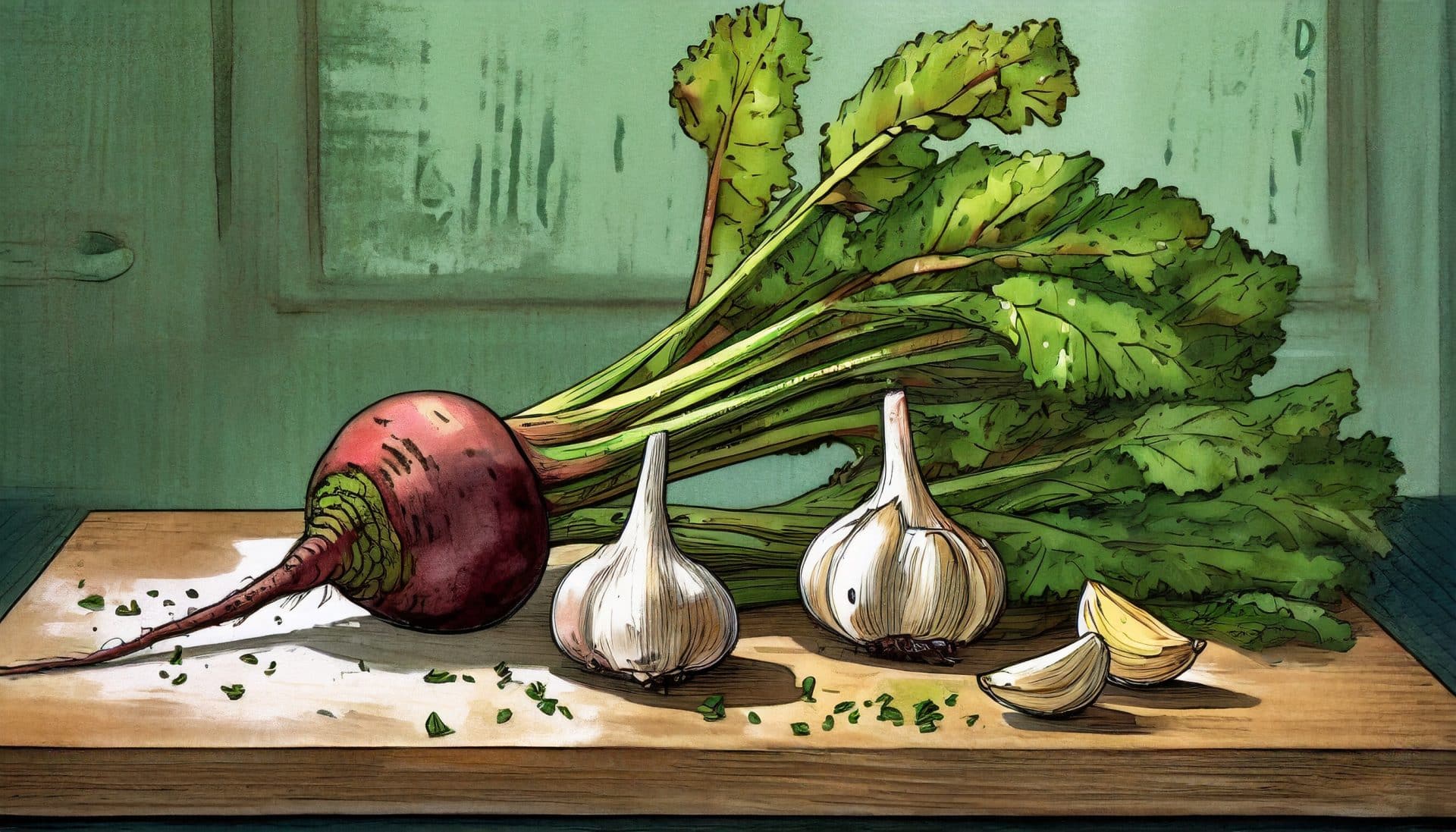
Beyond Asparagus: Surprising Foods That Can Alter Your Body’s Odor
Well, dear reader, our humble asparagus isn’t the lone ranger when it comes to causing a bit of a stink. Quite a few unexpected culprits can also alter our body’s fragrances. Ready to dive in? Let’s take a whiff and explore what’s cooking.
Drumroll, Please, Garlic Makes the List
You’ve come to chat about smelly pee, and you’re staying for the fun part. Well, here’s a showstopper for you. Garlic can alter your body odour. It’s not entirely surprising, considering the potent punch of garlic breath that can clear a room faster than a fire alarm. But, the big difference? Your body sweat can reek of it. When you eat garlic, the sulphur compounds get mingled with your bloodstream, and when you sweat, it’s like a little Eau de Garlic coming out.
We Have a Beetroot Alert!
Don’t laugh. It’s an actual thing! Eating abundant beetroot can give your urine a distinctive pinkish-red hue, often mistaken for blood. This relatively harmless condition is known as ‘beeturia’.
Spice Girls (and Guys), Beware
Can your love for a spicy curry make you smell spicy—or worse, sweaty? Indeed. Consuming a substantial amount of spices like cumin, curry, and fenugreek seeds can seep into your skin’s pores, inducing a certain zest in your body’s odour. So, don’t forget your deodorant next time you plan on a spicy gastronomic adventure!
Warriors of the Fish Realm
Fish, particularly those loaded with omega-3 fatty acids, are undoubtedly good for your health. But when you munch on a substantial amount, your body odour can get pretty fishy. It’s all thanks to a compound called trimethylaminuria. And no, you’re not turning into a mermaid or merman just yet.
So, asparagus isn’t the only food that can create a bit of a stink. Each mouthful you take can potentially affect your body odour. So next time you sniff something fishy – literally or figuratively – you might want to cast an eye over your dinner plate!
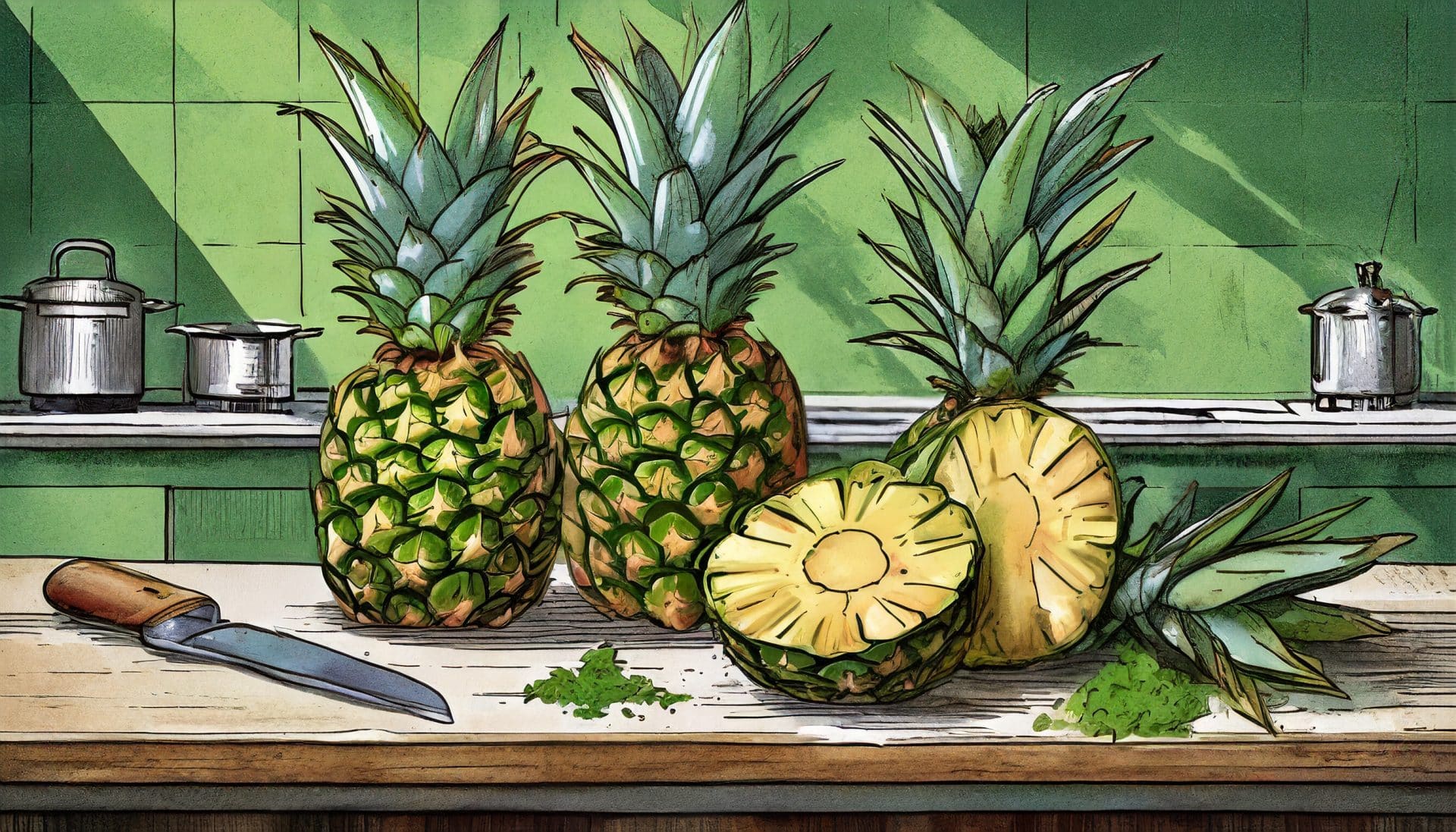
Bonus (not for kids): Can Pineapple change the taste of your Semen?
Ah, the pineapple! We’ve all heard the old tale – eat pineapple, which will make everything down there taste sweeter. But is there any truth to this? As intriguing as this sly wink of an anecdote may be, the science is as messy as an overripe pineapple left in the sun too long.
First things first, what’s with the pineapple and our bodily fluids? The crux of the matter is two-fold:
- Bromelain – A potent enzyme found in pineapple. It has anti-inflammatory properties, and it’s believed to break down proteins, potentially altering the taste of semen.
- Fructose – This natural sugar in fresh fruits (including pineapples) could potentially sweeten the taste.
Does this mean a pineapple-rich diet could cause semen to take on a bespoke tropical flavour? As promising (or horrifying – depending on your take) as this might sound, it isn’t that clear-cut.
Remember, our bodies are complex. Like each of us, they come with their peculiar quirks. What works for one might not necessarily translate the same for another.
Research in this field is somewhat scant, and at best, I’d venture to suggest that a diet high in fruit might improve the taste. Conversely, a diet high in fatty foods, garlic, onions, caffeine, and alcohol could result in a change for the worse.
So, does it hold up?
As far as modern science is concerned, the ‘Pineapple Theory’ isn’t anything more than an urban legend. Your diet can somewhat influence the taste of your semen, but a direct one-to-one correlation, such as pineapple equals sweet semen, is implausible.
In conclusion, like many things in life, the pineapple-semen connection is a mystery wrapped in an enigma, surrounded by a riddle. The definitive answer, as it stands, is that we don’t know.
What does “touché” mean?
After a few minutes of tripping over my thoughts, I explained I was trying to understand the word using the word itself, which wouldn’t work. So, onto my research list, it went. You see, the beauty of language is its diverse mix, many words borrowed and shared, and “touché” is no exception.
The Origin Story
“Touché” is a French term that made its way into the English-speaking world, much like “C’est la vie” or “Bon appétit”. It’s proof that language, like a good recipe, often takes a pinch of something from here and a dash of something from there…
It originates from the elegant and strategic world of fencing.
- Thrust: A quick forward movement with the tip of the sword.
- Parry: A defensive movement to block or deflect a thrust.
In this sport, ‘touché’ is what a humble and well-mannered fencer would say to acknowledge that they’ve been hit (or ‘touched’) by their opponent’s sword. It’s like saying, “Good shot, you got me!” or “Nice one, point to you.”
A Twist into Modern Conversation
Are you curious how ‘touché’ went from being an obscure term in fencing to a common exclamation? Well, it’s all thanks to the magic of media and pop culture. Those movies and TV shows we veg out in front of played a big part in spreading this term.
In the past, ‘touché’ was purely a technical term used in fencing to commend a successful point scored. Yet, as fencing began to feature in films and other popular forms of media, audiences found the term both exciting and intriguing.

The Hollywood Effect
Okay, let’s rewind and play out a classic Hollywood scene. Picture this in your mind:
Two exquisitely dressed gentlemen square off in an opulent room. They unsheathe their swords, and with cold resolve in their eyes, they lunge and parry with exceptional skill. Suddenly, one of them connects with an expert hit. He withdraws his blade, smiles smugly, and says, ‘touché’.
Scenes like this swept Hollywood’s silver screens, and it’s only human nature that we mimic what we see and hear, particularly when it is as impactful and dramatic as this. As a result, the term ‘touché’ found its way into common parlance, used as an expression of acknowledging a well-made point.
So, when your friend fires back with a wisecrack or an excellent counterargument, you can use ‘touché’ to concede their point. See? It’s that simple, like how we say ‘Ouch!’ when we get hurt.
Word Play with Love
But remember, language is a beautiful game. The key to winning is not just to understand the rules but to love how the game is played. The word ‘touché’, is just one of the countless examples of how language can change and adapt over time.
Language is not static—it lives, breathes, changes, and grows like us. It’s a part of our journey, shaping our understanding of the world. Take this newly learned term and run with it! Use it wisely, share it with your friends, and you might teach others something or two about the word ‘touché’.
Oh – here is another one for you – “foiled again”.
Raglan via the back roads!
Preparations (pulling out seats)

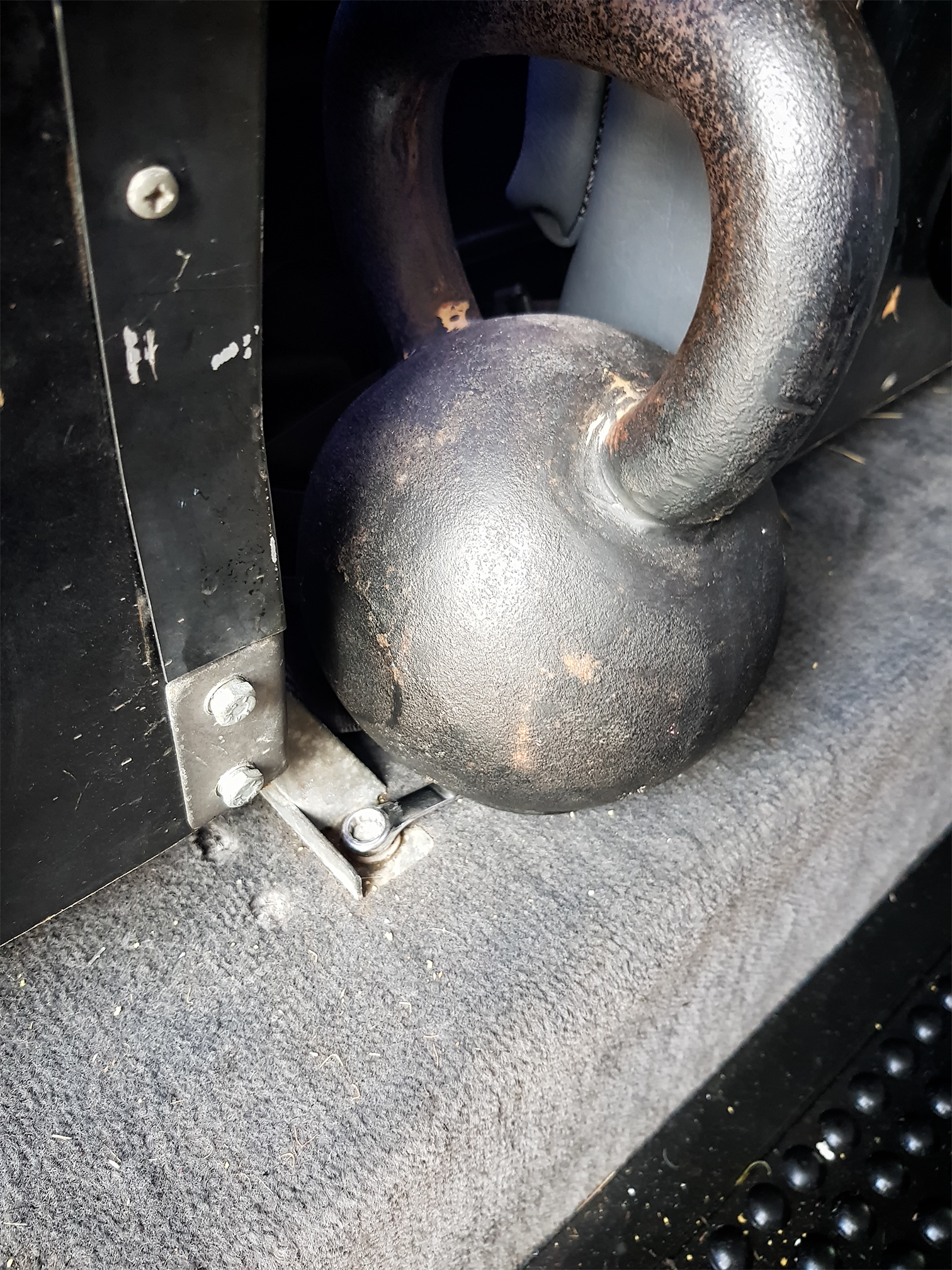
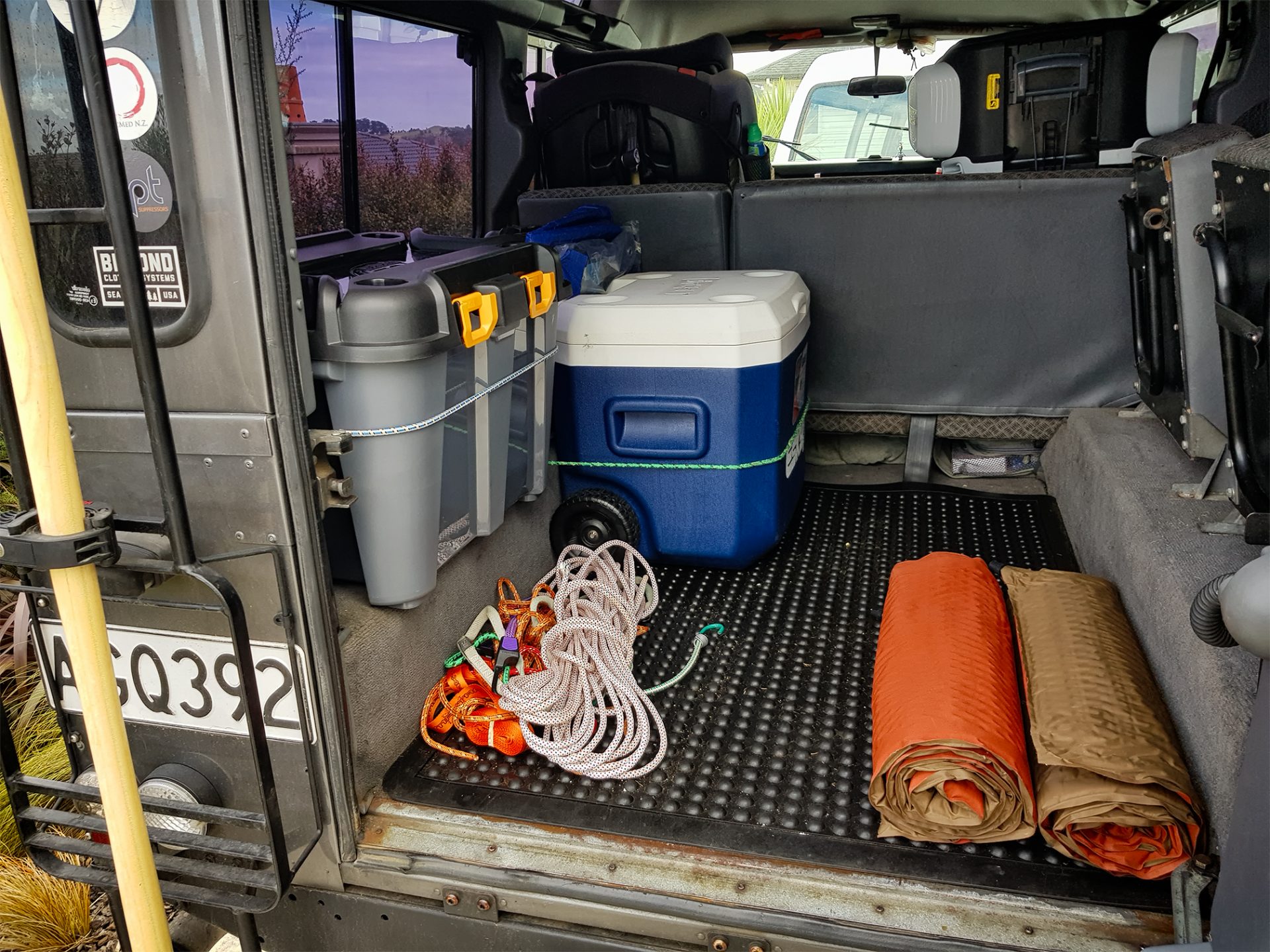
While it is kinda cool having the capacity to carry nine people – those extra seats in the back of the 110 also take up a bit of space. We had already taken one trip packing both my girls and their two cousins, so I figured it would be a safe option to take out the one side at least.
After a bit of frustration trying to do both ends of the bolts myself (kettlebell nearly worked) – I made a quick visit to the bro’s to get an extra helping hand. Under the truck in the dark is always a bit of fun. But two hands made quick work.
I have quickly sealed in the inside of the cab – but the long term is a set of drawers and some shelves – so it’s really only a case of stopping any splash/washing water ingress for the moment.
A $25 box from Bunnings tidied up an open top box I have had in the back for the jack, oil(s) and fluids and a few tools and spares, and moving the Chilli-Bin opened up a decent whack of extra space. It’s still a little in flux, but we are getting there.
The Plan
It really seems we are a little short on one-two day trips in the upper north that get off the beaten track but don’t require a serious level of 4wd. The plan is to eventually do tracks like Thomson, but in the meantime (until I sort a winch etc) I am looking for trips that aren’t on the main highways.
I actually found two suggestions on WikiLoc –
https://www.wikiloc.com/trails/offroading/new-zealand/auckland – though, information is sparse, so it was a bit of a punt. However, glad to report it was well worth it!
Google Maps – My Maps – great concept, but of little use in the truck.
So, I decided to use My Maps, part of Google Maps to plan the trip. It’s not the worlds most intuitive system, but, it allowed me to set some points of interest and create a custom route from each point.
The problem is, when you then load it up in the phone (which really is to this point, a seamless process), you cant actually use much of the maps you have created. You certainly can’t just load up the planned route and follow it. You can select a point of interest – but then google maps tries to sort the best route – which isn’t always the one planned. This was the case in point – as it tried to get me to take the main roads – not the point of the trip.
In the end, I just manually entered a series of ‘points on the map’. This means I had an ETA to some arbitrary point on the map – not the actually planned stops.
I would love to have a screen that gave me an ETA to the end of the trip, and an ETA to next waypoint. Much like I have setup on my Garmin GPS unit. I have played a bit with several other apps, which don’t have the turn by turn navigation options that Google Maps does but still looking for one that actually works like I think – which is always the ultimate. Rather than having to mould yourself to a systems way of thinking, the ultimate goal is to find a tool that moulds itself to mine. No problem customising things, but it needs to have the functionality at its core.
Also, as soon as you go ‘offline’ all the data in My Maps is no longer available anyhow. Not sure why it can’t cache locally – but really makes it useless for any overland work, though, it’s kinda useless anyhow because you can’t actually use the tracks you have planned. Odd. It really seems like the two development teams don’t actually talk to each other.
However, being a google product – embedding, sharing all of that is very simple.
Anyhow, onto the roads we went.
Port Waikato to Raglan, via the coast!
Really, really enjoyed this part of the drive. Heading out to Port Waikato, we headed south. Alice (the Missus) had spent a bit of time as a kid out at Port Waikato, but never headed south from that way – neither had I – we headed off into the hills and quickly hit gravel.
I will say, none of the roads really even required a 4wd – Most cars would get through without any hassle – but something about being off sealed roads was nice. Yes, I am sure my rural readers will find this rather quaint, but whatever. Most of you are living in cities at this point in time.
It always amuses me just how much land is really out there. It also frustrates me, because I do see so much land that would be suitable for long range shooting courses and competitions – but that’s another issue. Even with rain coming in, there was great views to be had, some very interesting geological structures, and a great view of the coast.
We stopped a couple of times along the way for photos and to stretch the legs, making our way down to the Nikau Cafe for a ‘late’ lunch.
The Nikau Cafe
What a find. It’s really an easy day-trip from Auckland – and if you want, I believe you could even head straight down on the main highways and stay on the seal the whole way. However, we all already know those roads. It was nice to explore something new.
Nikau Cafe has an awful lot of charm. While the kids were a little small to head off to the glowworm caves (it requires a bit of walking/rambling and they recommend them to be over seven) – our intent was really just to stop for a break and a snack anyhow.



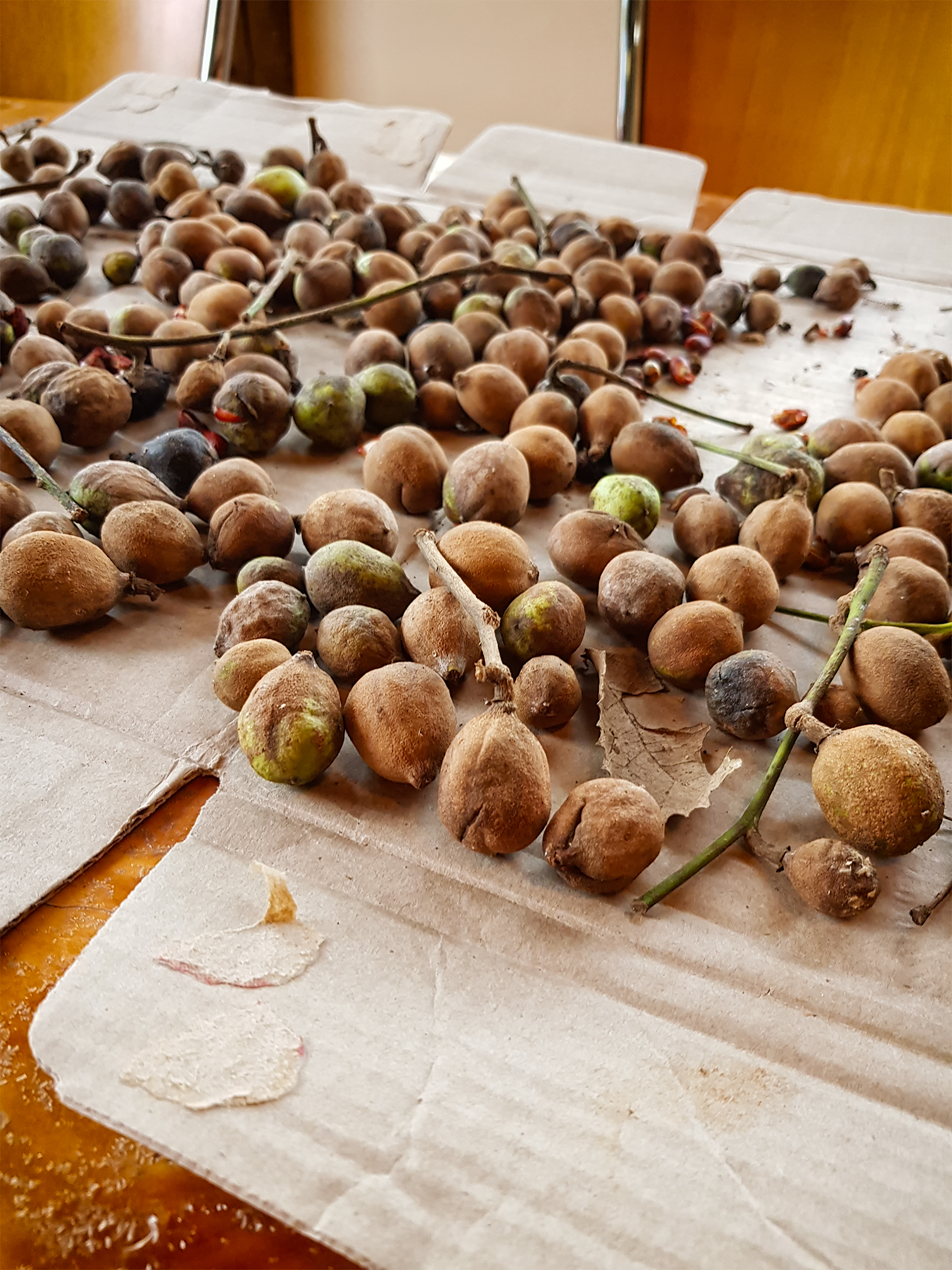
The three cheese and maple syrup was a personal favourite! Good coffee (roasted themselves), awesome homemade lemonade, and a lot more on the menu I would actually be keen to head back to and check out again.
Plenty of things to keep the kids and the adults interested, and, we were given some Chayotes to take home (more on that later).
The kids didn’t want to leave. Maybe something to do with the piles of soft toys that were there. However, they did eventually put everything away and we headed off again.
Raglan Holiday Park
The rest of the drive down to Raglan was more great views. Down the coastline, finally arriving at the Raglan Holiday Park, our home for the night.
I set up the Feldon Rooftop Tent, while Alice kept the girls busy. The beauty of the system is that it can be up and sorted within five minutes if need be, a little longer to tweak and open up some of the windows.
The loose plan was for Alice and the two girls to sleep in the tent, while I was going to sleep under the tent floor in the bivouac. I knew a few showers would be through, but instead of setting up the tarp as we did at Hot Water Beach, I wanted to try to make do with the shelter of the tent above.
A simple dinner of ‘campfire quesadillas’ – which basically reminded me the importance of quality ingredients (in that, the recipe is fine, but nicer base ingredients would make a hell of a difference), a while playing with the selection of Lego on offer for the kids (Lego and kids seems to always go well) and the girls were off to read books in the tent, while I sorted my sleeping arrangements for the night.
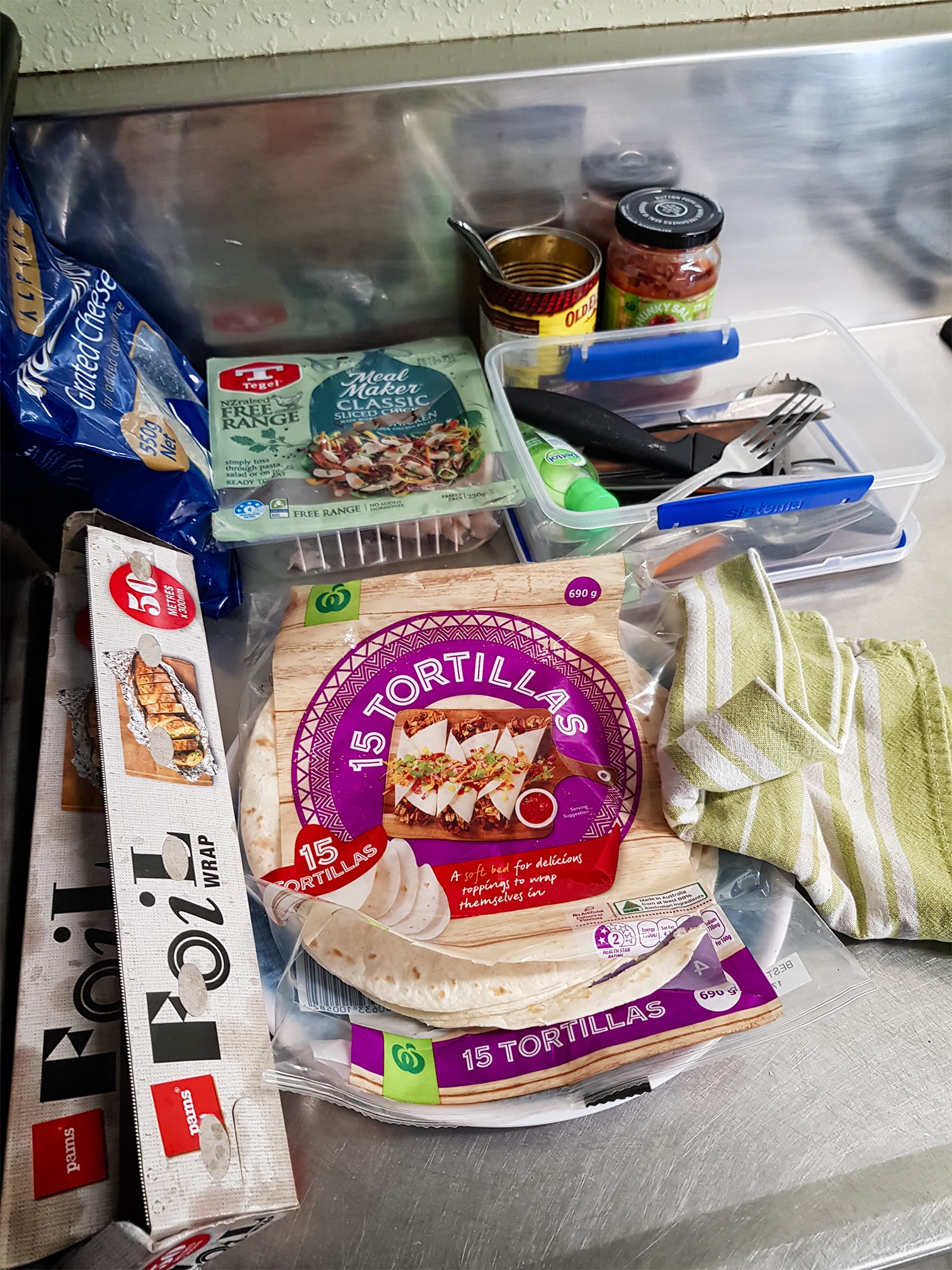
Wet Feet
We are looking at getting the ‘Spare Room‘ – basically, an awning that zips around the perimeter of the extended tent, where it hangs out over the truck. It had occurred to me, that it would likely be long enough for me to simply drop the mattress down the long side of the room – which would mean I wouldn’t have to worry about the bivvy bag, use either an air mattress or even a camp stretcher, and stay dry. As it was, while my feet were hanging out from out under the tent (and got rain on them) the Goretex bag kept everything dry. Though, I did keep slipping off the side of the not-quite-wide-enough Thermarest mattress.
The campground had everything we needed, though essentially, we just slept and ate there. Of course, I intend to get away from the campgrounds soon. But with the two little girls, having some basic facilities and things to keep them occupied is currently a welcome bonus.
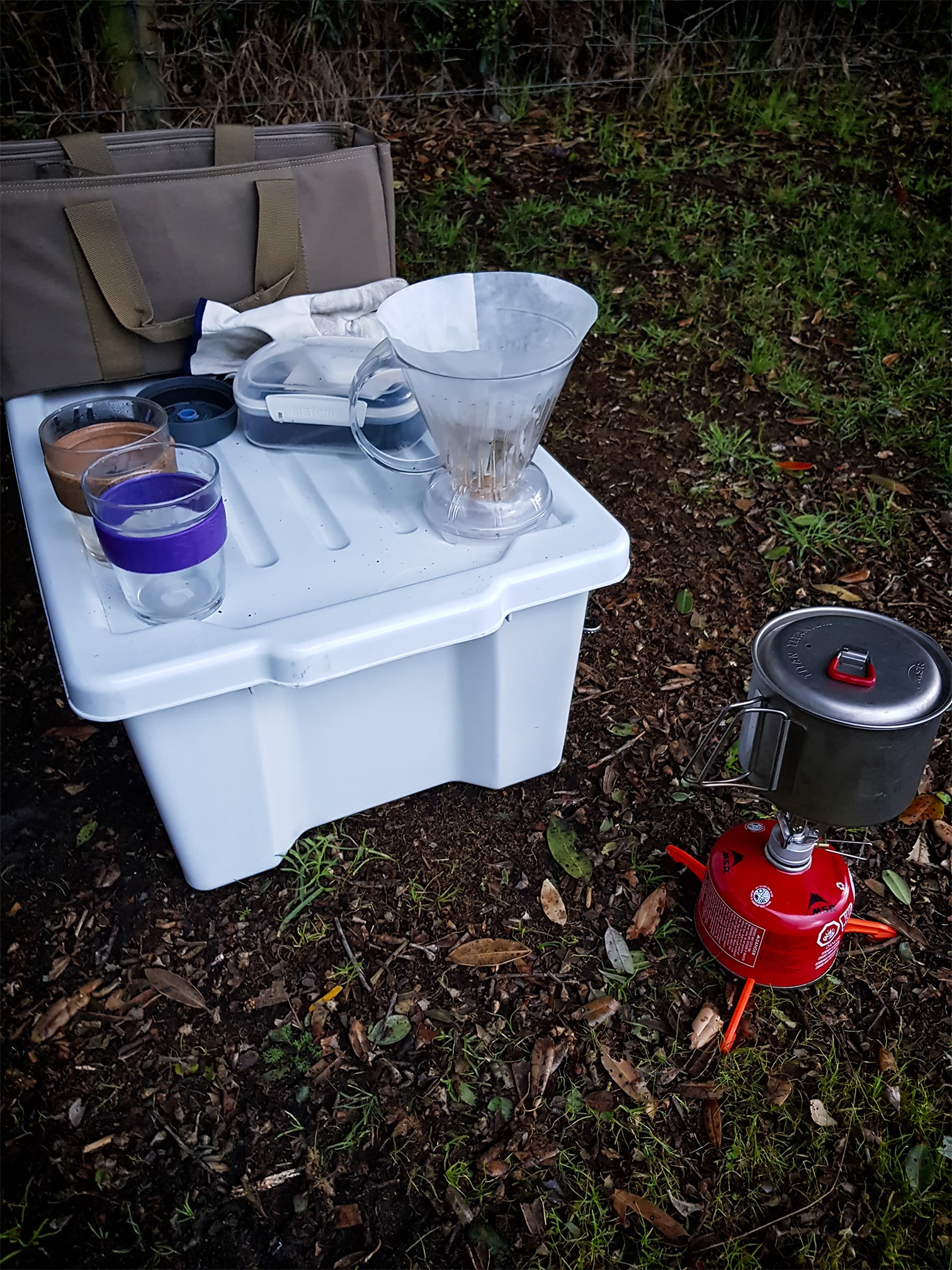
Day Two
Coffee. Breakfast, and we were off. I made pancakes, which, needs work. Too much water I think. Spongy.
We headed into Raglan, explored the wonderful playgrounds there with the girls for a bit, then headed off.
The loose plan was Hamilton, via another track I had identified online – Old Mountain Road
Old Mountain Road
Old Mountain Road sits between Raglan and Hamilton – a favourite for runners and mountain bikers, its again, a gravel road, though seemingly well maintained.
As we were heading through the roads, we came across something a little strange. A large concrete barricade. I had read the term ‘tank trap’ online. Though I am still really unsure of the original purpose of the structure.
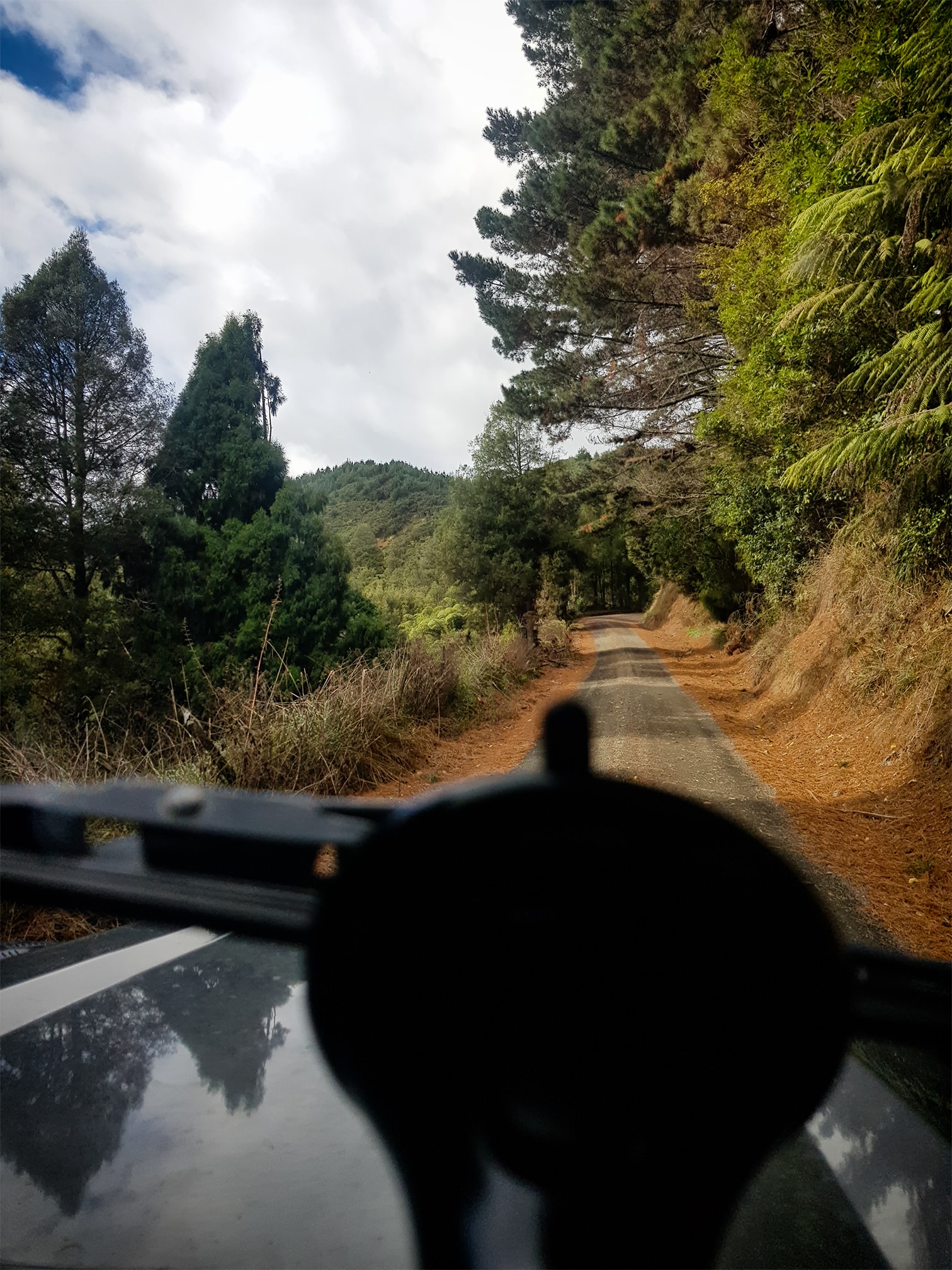

It became a bit of a tour of cafes – an afternoon visit to ‘The Village’ Whatawhata. Another great cafe. I would highly recommend the Baked Eggs. And make sure you have a change of clothes for the kids, as there is plenty of outdoor playgrounds for them to get a bit dirty in.

Instead of headed to Hamilton, we decided to stay at the Cafe longer and then headed back up, joining back up with the main highway just south of Ngaruawahia.
Overall, it was a simple, but enjoyable trip. We are slowly sorting out our systems in regards to cooking and packing, and looking forward to slightly longer, and more remote camps as well. Lots to improve/change/tweak. And having a lot of fun doing so!
Chayote


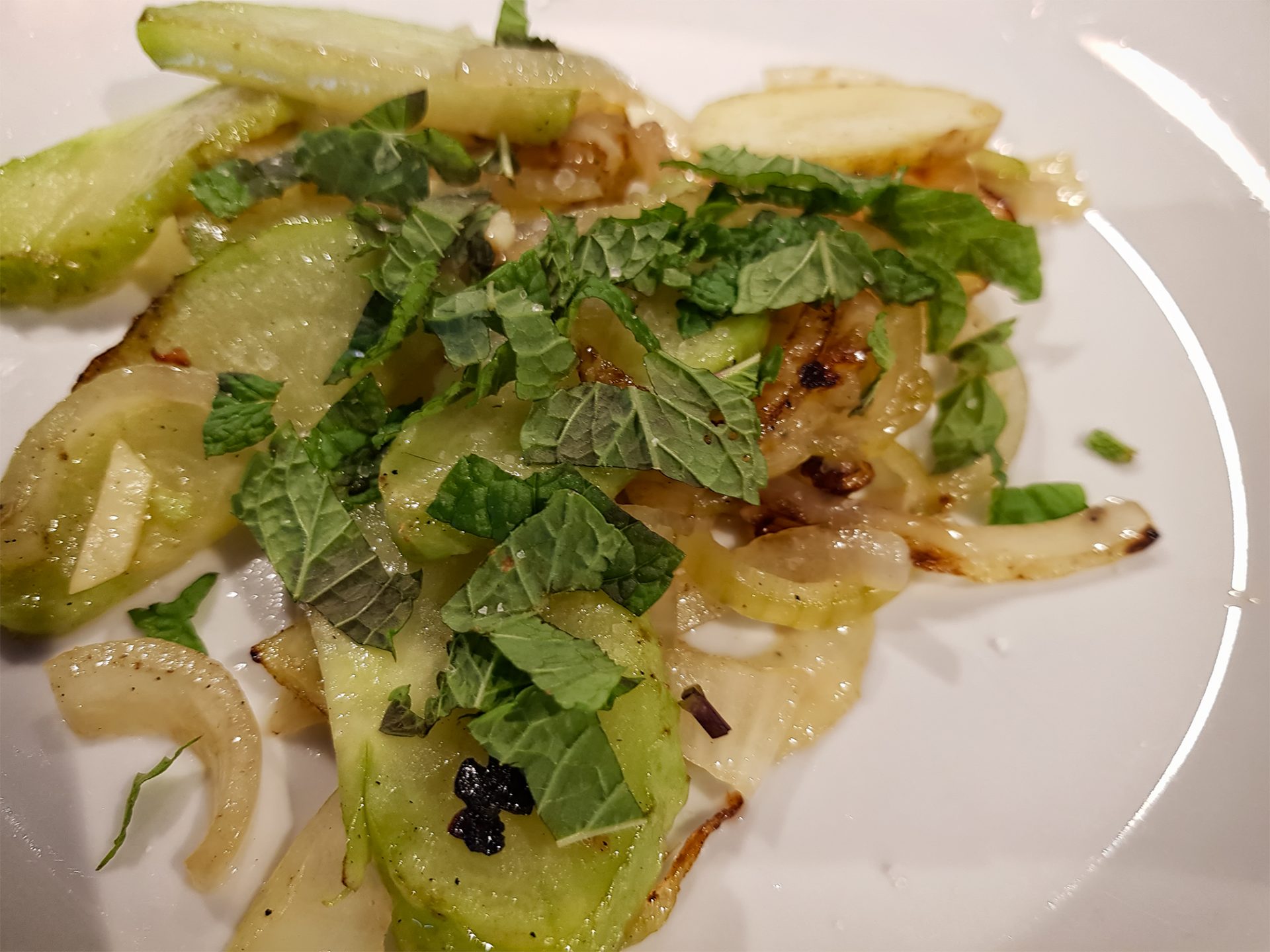
Never cooked it before. Lots of butter, onion, garlic, salt, pepper and a spud. Tasty – but oddly enough – tasted mainly of garlic and salt. Which is fine by me.
The Unspoken Laws of BJJ: A Beginner’s Guide to Proper Etiquette
Give Way to Senior Belts when rolling
Learning techniques and mastering the artistry of Brazilian Jiu Jitsu is essential, but so is an understanding of etiquette – especially concerning the senior belts. A fundamental unspoken rule in the dojo? Always yield to senior belts when it’s time for rolling – or sparring.
You might think, “Why do I have to give them precedence? We’re all here to learn, right?” you’d be talking sense. But remember, respect is a two-way street in BJJ, and showing deference to senior belts is part of the cultural fabric.
A black belt is just a white belt who never quit.
Unknown
Why Yield to Senior Belts?
It’s simple. The senior belt practitioners have spent years honing their skills—they’ve earned their stripes, figuratively and literally. Letting them take the lead in sparring sessions is a sign of respect. It’s not about being subservient or diminishing your worth—
it’s about acknowledging their expertise and embracing every opportunity to learn from the best. Plus, consider it a nod to the rich traditions and practices that form the backbone of BJJ—it’s quite a humbling experience.
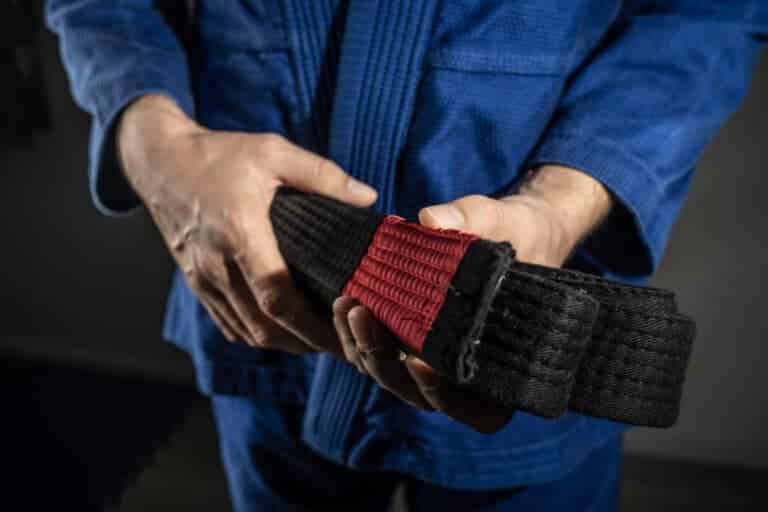
If demoing something, ask for a lower belt to be your Uki
Why is it better to ask a lower belt to be your Uki when illustrating a technique? Well, it’s all about demonstrating respect and hierarchy in the gym. Let’s delve a bit into this unwritten code, shall we?
Consider this scenario: You’re a fresher in the BJJ world, eager to show off your newly learned armbar. Would asking for a higher belt to receive your demonstration be fair or respectful? Not really. Using a lower belt preserves the dignity of higher belts and gives you a lending hand to blossom in a supportive environment. Everybody wins!
Role of a Uki
When you ask someone to be your Uki, you ask them to be a helpful training partner. You ask them to trust you as you demonstrate a technique, often making them vulnerable. It’s a role that demands mutual respect and safety awareness.
What is a Uki?
Let’s have a natter about Ukis, shall we? An Uki is a Japanese term for your partner when you’re demonstrating a move or technique. These mat-star folks who generously offer their bodies are the unsung heroes in the dojo. Getting the opportunity to be a Uki means someone believes you can take a bit of a rough and tumble without whimpering about it.
But here’s the rub: being a Uki isn’t just about playing crash test dummy. It’s also about providing precise and valuable feedback. If you’re cranked into a pretzel and it doesn’t feel right, you’ve got to speak up. In the world of BJJ, silence isn’t golden—it’s a ticket to an unexpected physio visit.
Why Be an Uki?
Isn’t it just safer to keep your limbs intact and avoid the Uki role? Well, not so fast—there are solid reasons why you’d want to be a Uki. For one, it’s an excellent opportunity to feel the technique applied correctly, which helps your understanding of it. Higher-ranking students will likely offer teaching points and corrections when you’re Uki. Lastly, if you’re a good Uki, you can make friends and influence people—no minor consideration in an environment where people sit on other people’s heads for fun.
Embrace the Hierarchy
The pecking order in BJJ is apparent yet subtle. We don’t worship higher belts, but we acknowledge their journey and the knowledge they’ve accumulated like a smooth technique-collecting machine. You respect this hierarchy by roping in a lower belt as your Uki while getting your time in the spotlight. It’s like standing on the shoulders of giants—except the giants are on the mat with you!
So, when the time comes for you to demo something, look for a Uki who’s a lower belt. It’s not about choosing the weaker target but promoting a culture of respect and learning. Remember—You were once in their shoes, and how you treat them will impact their journey, too.
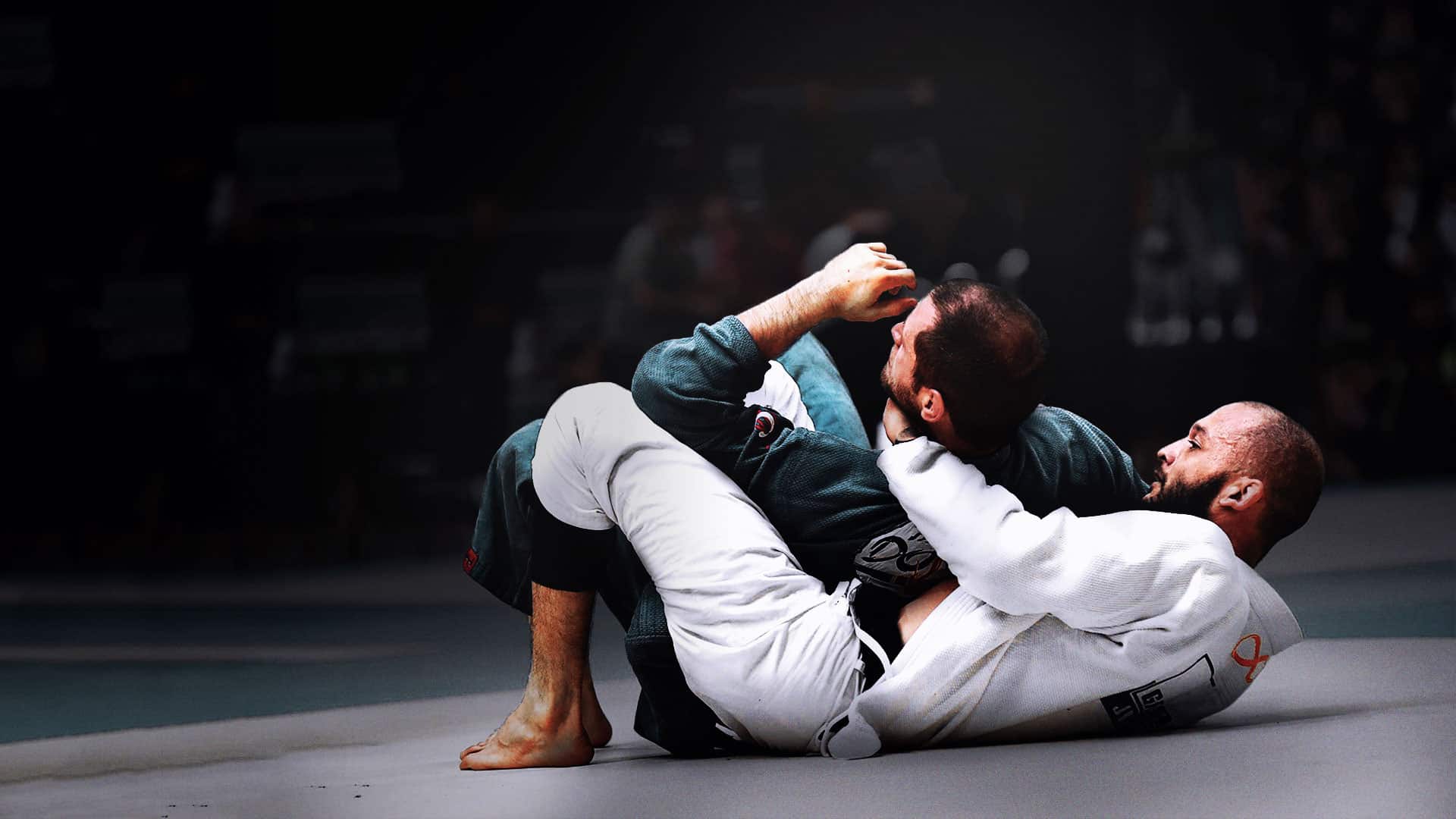
Sportsmanship and Fair Play
After all, we’re not just here to win – we’re here to master the art of Brazilian Jiu-Jitsu. And getting any art form requires, foremost, respect. So, how does this respect translate into the dojo?
It’s Not About the Win – It’s About the Learn
First, let’s get one thing straight: BJJ is not about crushing your opponent to the ground but improving yourself. Sure, it’s always great to win, but do we learn anything if we always succeed? Nope, we learn from our losses. So, instead of viewing your sparring partner as your opponent, consider them your co-learner. Help each other and grow together. Remember – the journey is long, but it’s also beautifully satisfying!
Injury rates in BJJ are relatively low compared to other combat sports.
Keep the Ego Outside the Mat
When you step onto the mat, leave your world-champion dreams at the door. What matters here is not your ego but respect, learning, and helping each other grow. If someone taps you — congratulate them. If you tap someone — help them learn how they can improve. We rise by lifting others, right?
Tap in Time, Tap Right
Tap out when you’re caught in a position where it’s impossible to escape. There’s no shame in tapping; it’s a sign of learning and growing. Plus – it may be the only saviour of your joint health.
Equally important – if someone taps, STOP. They’re trusting you with their well-being, and it’s up to you to respect that trust. So, as soon as your partner taps, stop applying the pressure and break the hold.
Respect the Tap, Respect the Body
Each one of us is different. Some are flexible like Gumby, some – are solid as a rock, some can take a punch, and some bruise-like peach. We need to respect these individual variations. If your partner says a technique is causing pain or discomfort, ease off and try something else. BJJ is about getting better, not getting injured. Let’s keep it cool, shall we?
In sum, Brazilian Jiu Jitsu is like a game of chess. It’s not about who brings down the king. Instead, it’s about who plays a better match. And that better game begins with respect, mutual learning, and protecting each other’s health. After all, nobody wants to be straight-jacketed out of a BJJ dojo – quite literally.
The best way to improve in Brazilian Jiu Jitsu is to lose a thousand times. But remember, while you’re busy losing and learning, remember to have fun too!

Don’t grab fingers!
It may seem trivial, but finger-grabbing in Brazilian Jiu-Jitsu is a big no-no. Yes, your fingers! You might be thinking that anything goes in this sport. Could the fingers not just be seen as tiny, fleshy levers ripe for the bending? Well, not exactly.
In Brazilian Jiu-Jitsu, there’s a certain trust between athletes. We step onto the mat, knowing full well we might be choked, thrown, or arm-barred—yet have faith in the idea that our opponents will respect our safety. Grabbing a single finger or even two fingers is a dangerous game as it can quickly lead to fingers being sprained or, even worse, broken. Not a pleasant image, right?
We’re not saying you can’t engage the hands in combat—far from it. But those single-finger torque locks? That sneaky, thumb-breaking grip? Best left for the films.
The Principle Behind the Rule
You might ask, “Why not the fingers? They’re right there!”. The principle behind the prohibition of finger-grabbing can be boiled down to two main elements: safety and sportsmanship:
- Safety: Twisting or yanking a single finger can lead to nasty injuries. The hands are delicate instruments, damaging them can impact a practitioner’s ability to train, compete, or perform daily tasks. No one wants to explain why they’re wearing a cast on their finger at the office!
- Sportsmanship: If we’re honest, finger-grabbing feels a bit; how should I say it?– cheap. In BJJ, we’re trying to outmaneuver our opponent with skill and technique and winning by brutally bending a pinky finger. That’s not cricket.
Remember, when practising BJJ, the goal is not to cause injury but to learn and improve (while having fun). So, next time you’re eyeing those tempting digits, remember the golden rule: Don’t grab fingers!
Exceptions to the Rule
Now, let’s not assume all finger interaction is forbidden. There’s a difference between an uncontrolled yank on someone’s finger and a carefully applied hand or wrist lock. But to keep things neat – and our fingers intact – let’s always aim for control and precision rather than force and speed, shall we?
In a nutshell – respect the fingers, respect the practitioner, respect the sport.

Mop the Floor!
In the world of Brazilian Jiu Jitsu, mopping the floor isn’t just a janitor’s responsibility – it’s yours too. If you’ve just left every ounce of your sweat on the mat, it’s only fair you help clean up afterwards, right?
The true art of Jiu Jitsu is to be humble.
– Helio Gracie
The Unsaid Rule of Cleaning Up
We’ve all been there – the intense, sweaty session that leaves the mat looking like a murder scene from a B-movie. Not the prettiest sight, indeed. And you know who’s expected to help clean that up? You – yes, you! Even though it’s not explicitly stated in your membership rules, it’s a golden opportunity to show respect for the space and your fellow practitioners.
The Sweep of Humility
There’s a certain humility that comes with mopping the floor. It’s like a post-training meditation, giving you some quiet time to reflect on what you’ve learned during the session. Sure, it’s not as glamorous as executing a perfect Armbar or a nifty De La Riva sweep, but it’s no less important. Plus, running that mop across the floor gives you a fresh perspective on the dojo – seeing the mat not as an opponent but as a training companion.
Hands-On Hygiene
Let’s face it – a clean mat is a happy mat, and a comfortable mat makes happy practitioners. Aside from the obvious benefits – preventing skin infections and funky odours – it also extends the mat’s life. And let’s be honest, no one – and I mean no one – wants to roll around on a greasy, grime-filled surface.
Remember – cleanliness is next to godliness; in Brazilian Jiu Jitsu, it’s also next to endless, injury-free rolls.
In conclusion, mopping the floor isn’t just a chore; it’s part of the culture, a gesture of respect, and a vital step in the continued exchange of knowledge and skills within Brazilian Jiu Jitsu.
Jiu Jitsu is not about being better than someone else; it’s about being better than you used to be.
– Unknown
Don’t be the smelly guy.
We’ve all been there – during rolling, you’re caught in a guard and suddenly hit by a wave of stench that makes you tap out faster than an armbar from Roger Gracie. Not the most pleasant of experiences. That’s why it’s essential to consider your hygiene in Brazilian Jiu Jitsu or any social interaction.
The Offence of Odour
Being the smelly guy isn’t just unpleasant—it could be seen as disrespectful to your training partner. BJJ involves close physical contact, so can you imagine the awkwardness of rolling with someone who hasn’t paid mind to their hygiene? Trust me – you don’t want to be THAT guy.
Good Hygiene: Outside and In
Mind you, personal hygiene in BJJ is not just about how you smell but also about how clean your GI is. Remember – you’re not the only one who will be wearing it. Your training partners and opponents will also have direct contact with your gi. So, keeping it fresh is a common courtesy.
The same goes for your mouth. Given how close we get in this sport, a quick brush and rinse before class isn’t just appreciated – it’s a godsend! If you’ve been to a class filled with coffee, garlic, and tobacco breath, you’d know what I’m talking about.
Your Hygiene Reflects Your Approach to BJJ
It’s not just about being the smelly guy in the room and being unpleasant for everyone around you. It’s also a clear sign of disrespect for the sport, your training partners, and the space in which you train. Brazilian Jiu Jitsu is all about respect, and adhering to these simple yet essential, hygienic commitments reveals the true spirit of a practitioner!
Treat your hygiene the same way you treat your BJJ techniques – meticulously and with respect. That’s what being a good practitioner is all about, my friends!
In Summary
Righto, we’ve babbled on at the length of a black belt’s masterclass—so let’s pull it together, shall we? The world of Brazilian Jiu Jitsu (BJJ) teems with nuance and intricacy, not just within the techniques and moves but also in the etiquette and ethics of its practice.
- Respect the Hierarchy: Understand the belt ranking and, correspondingly, respect those above you. This rule includes giving way to senior belts on the mat, being someone’s uki when asked—particularly if they’re of a higher belt- and other minor elements affirming the pyramid of influence and learning in BJJ.
- Sportsmanship and Fair Play: Remember, your ego doesn’t get to put on the gi with you. It’s a sport you’re here to learn and grow in. Don’t aim for a five-second victory. Aim for a five-year understanding and improvement on your techniques, tapping right, and respecting the tap.
- Cleanliness: Nobody likes a smelly duelling partner or a grubby dojo. Prioritise hygiene, mop up the place after a session, and most importantly, don’t become ‘that smelly person’ everyone avoids.
In essence, the not-so-secret code comes down to respect and humility. Every somewhat unwritten rule we’ve discussed is linked to respect—respect for your training partners, coaches, the dojo, the sport, and yourself. So, let’s get cracking the right way—don the gi, tie that belt snug, and hop onto the mat with the right attitude. We’re all here to learn, grow, and scrape a knee or two on the journey, aren’t we?
A Final Piece of Advice
You’ve had a good scroll so far, and I hope this crash course in ‘dojo-manners for dummies’ has served you well. My final advice to you, though—always continue learning. Not just the techniques or ‘trick’ moves to catch your opponent off guard, but the finer elements of BJJ, what makes it what it is. In the wise words of famed martial artist:
Learning is never cumulative; it is a movement of knowing which has no beginning and no end.
Bruce Lee

